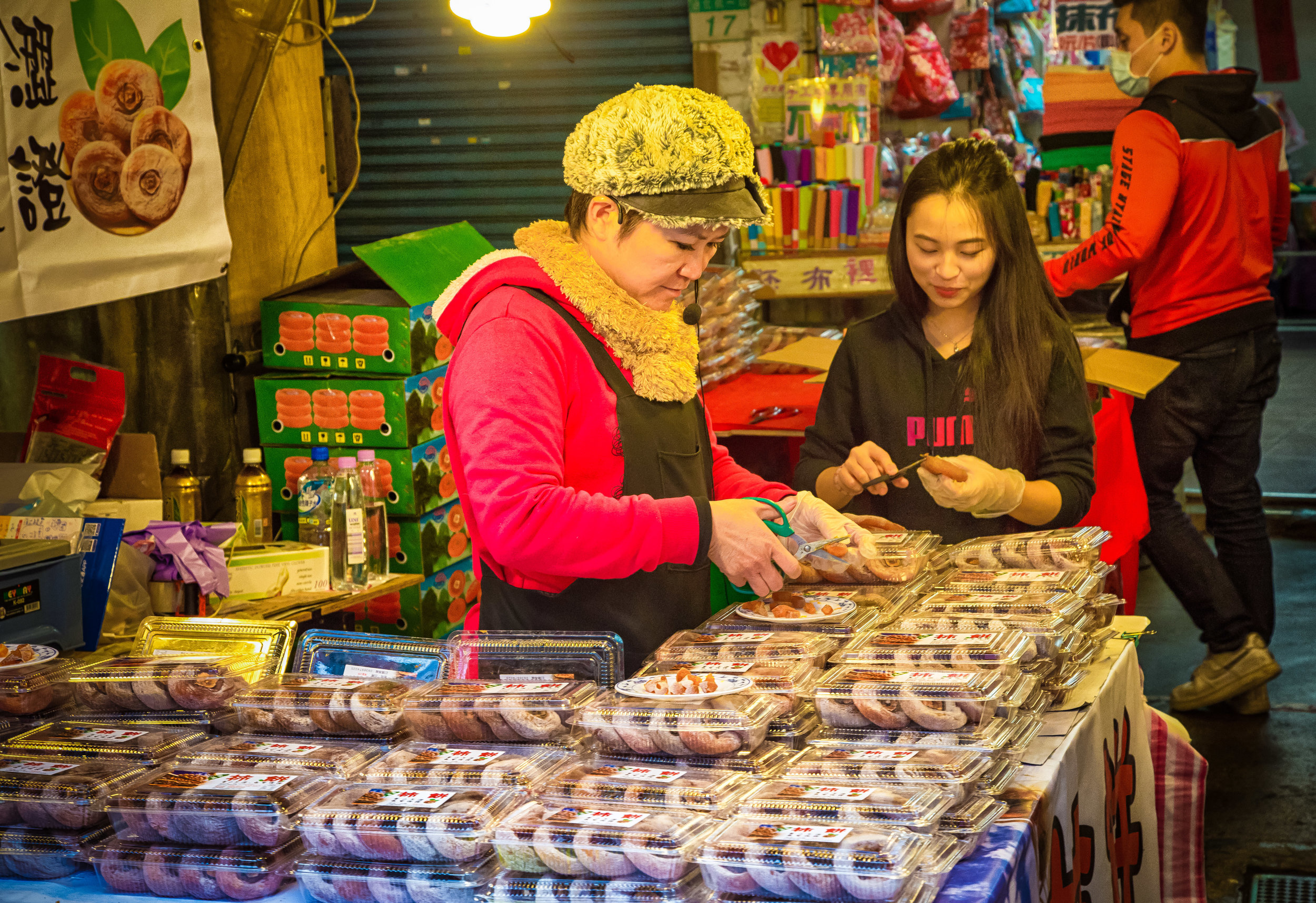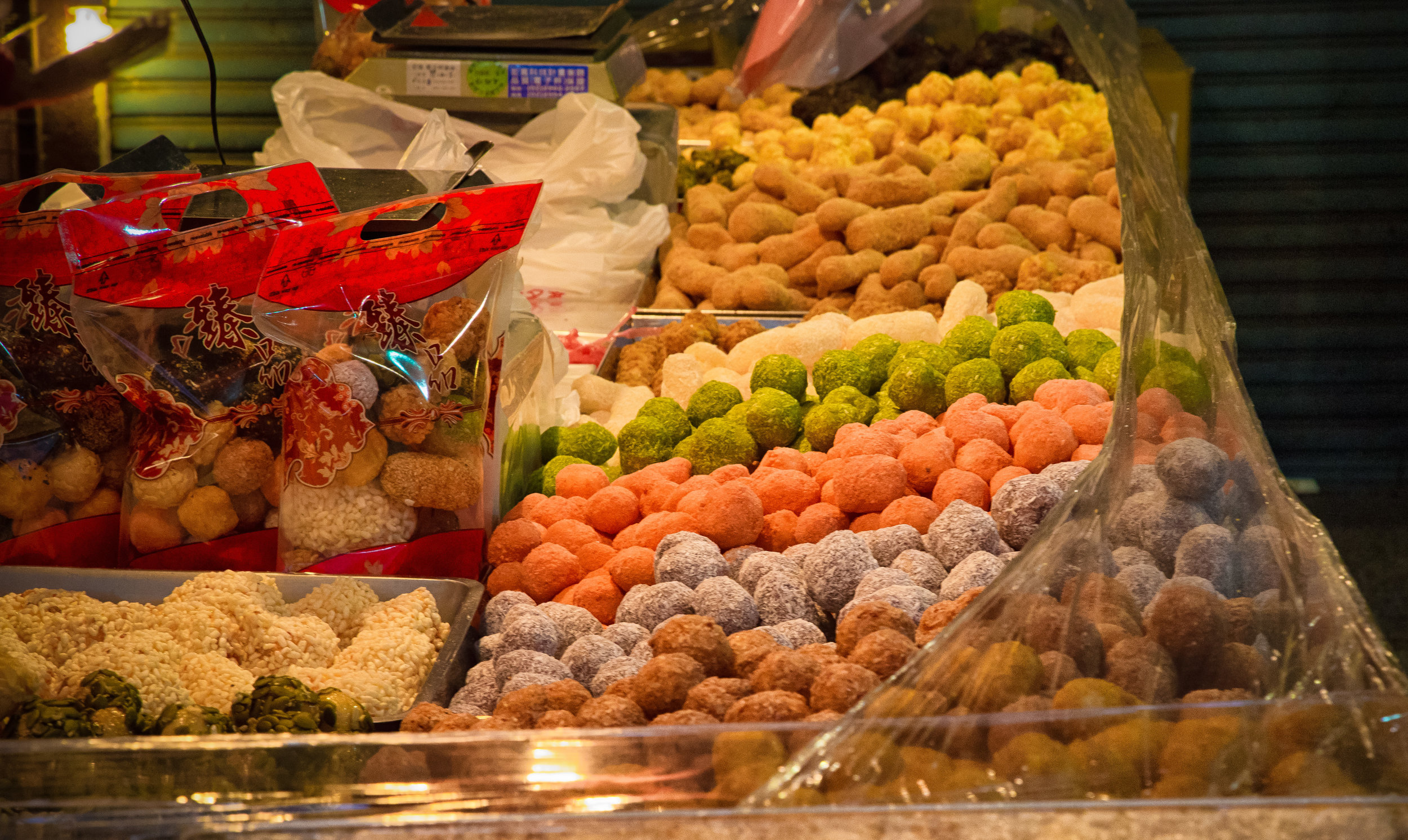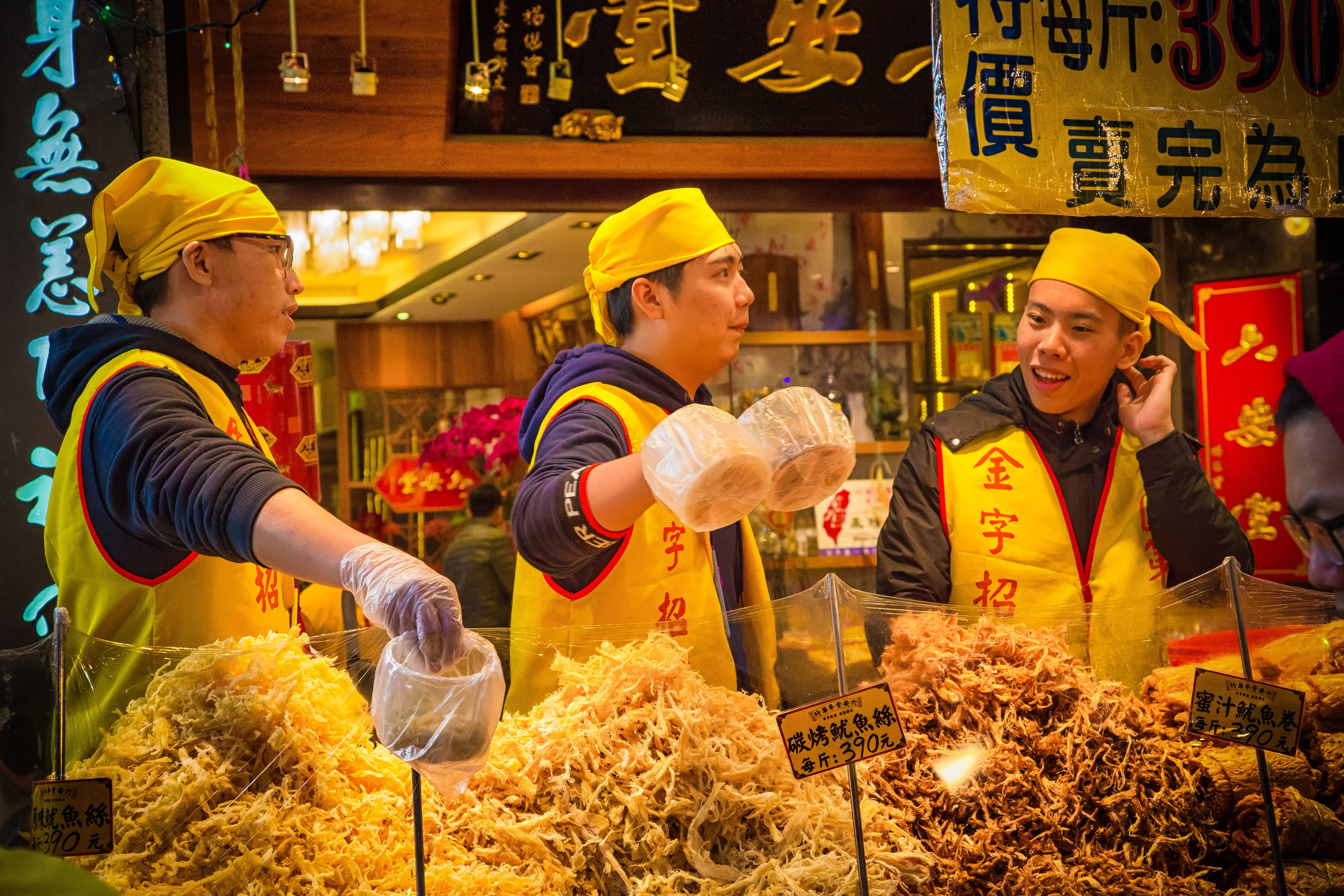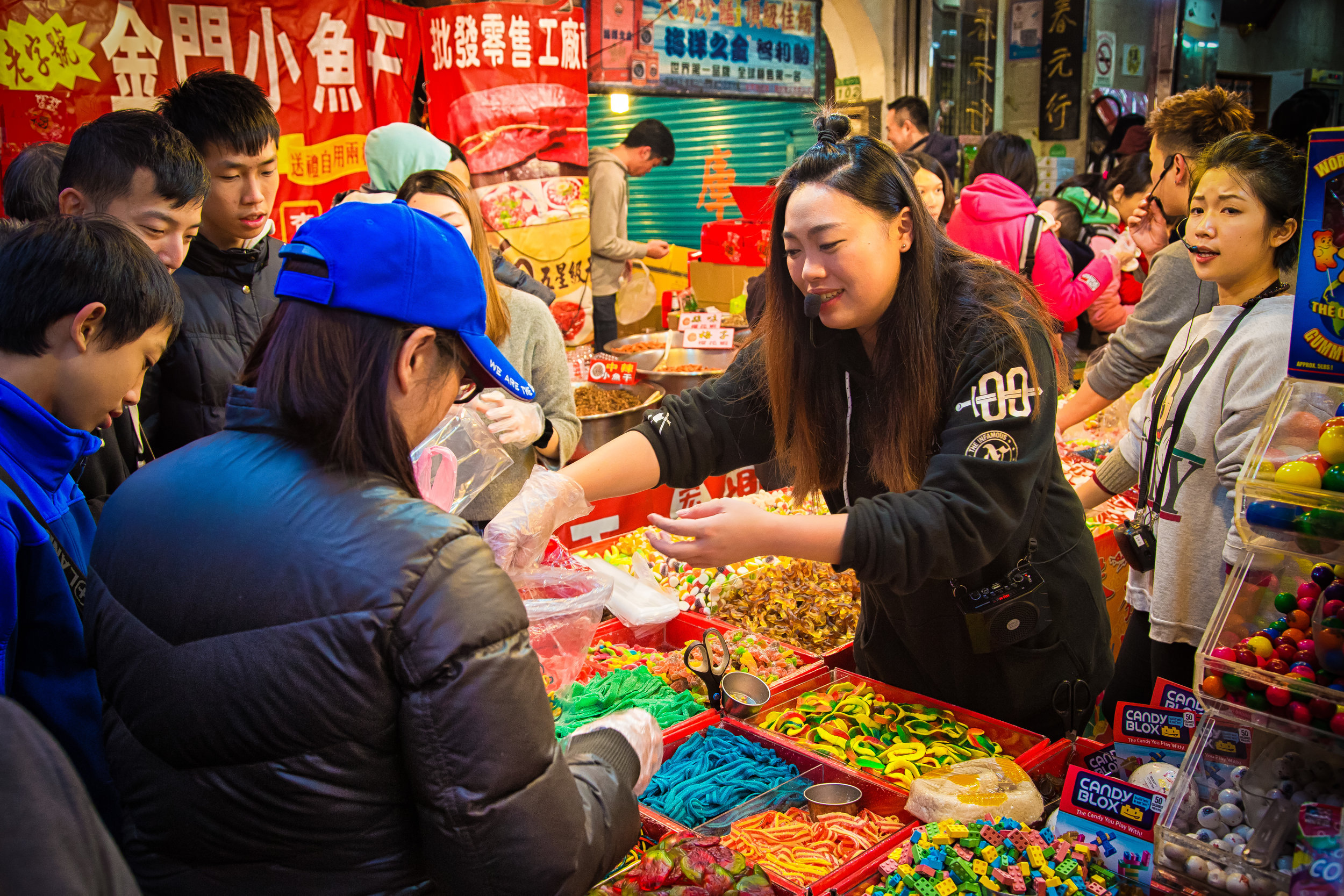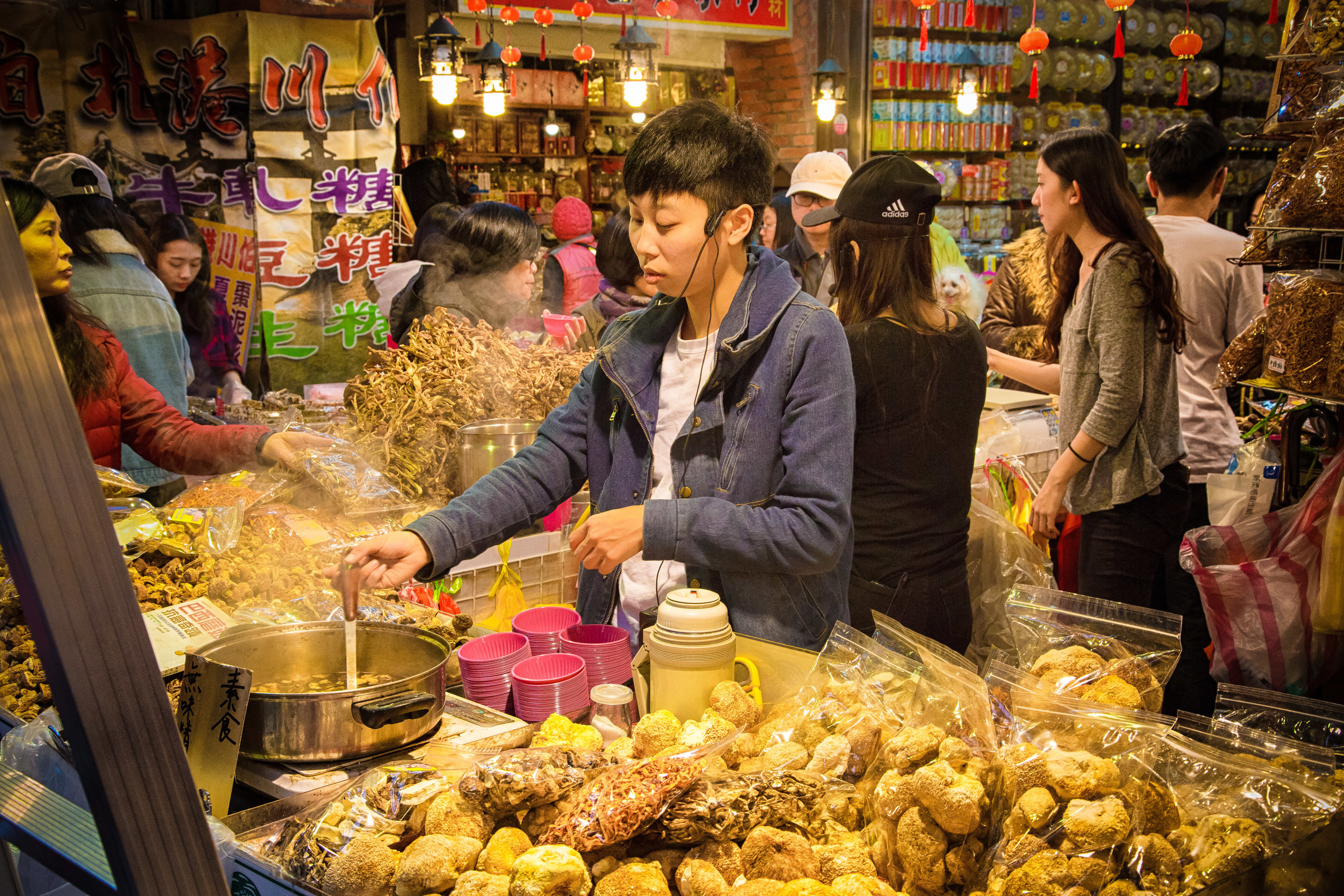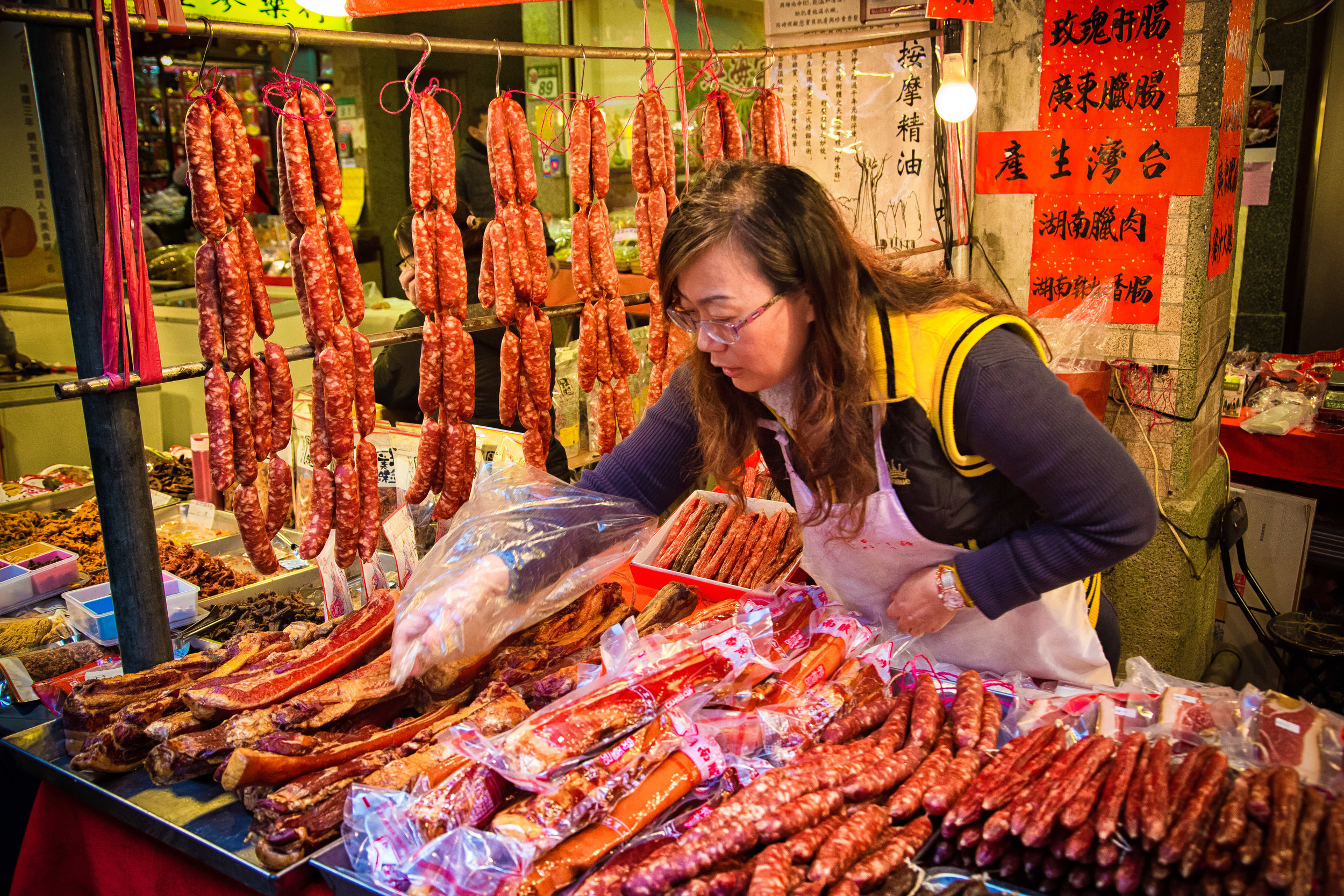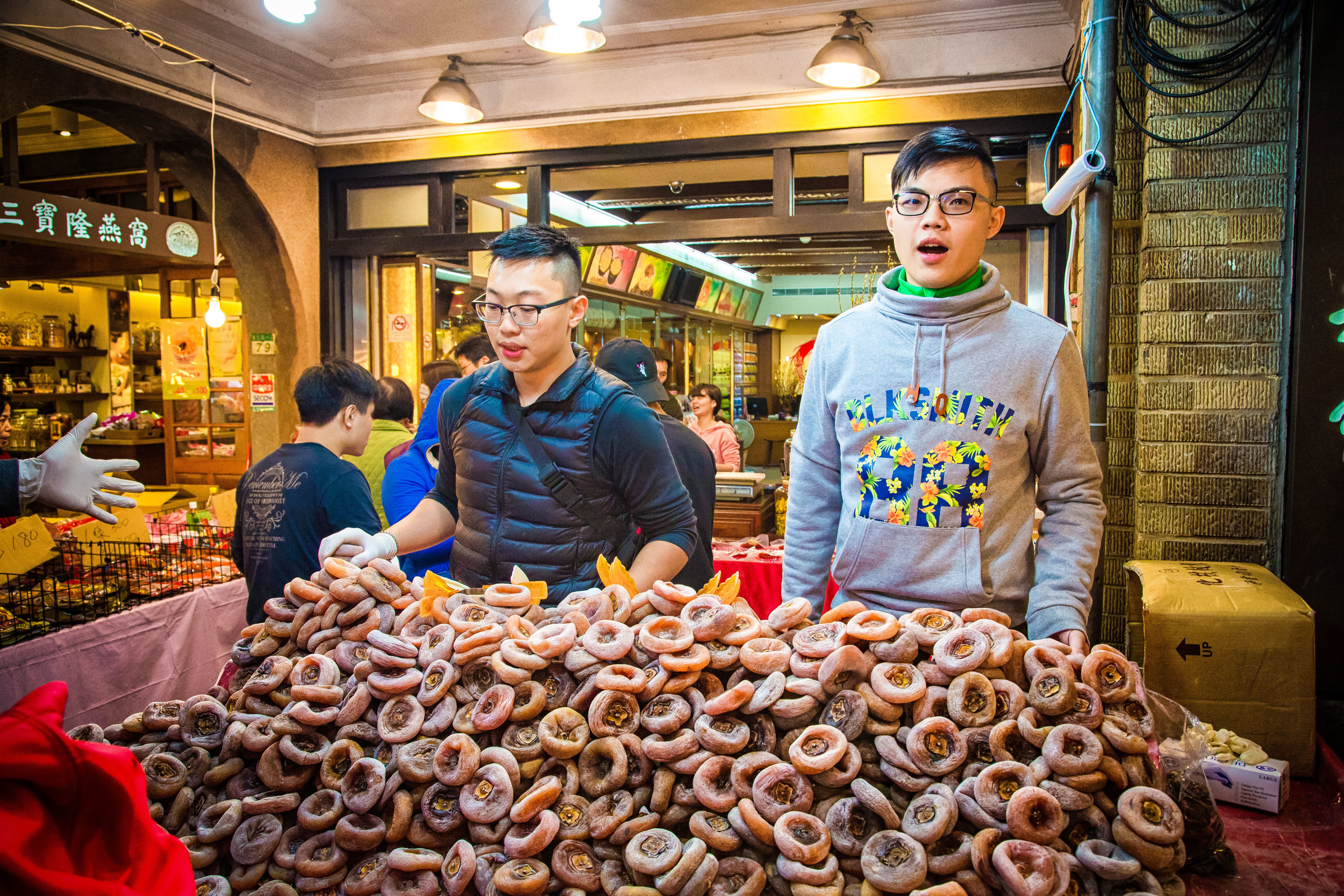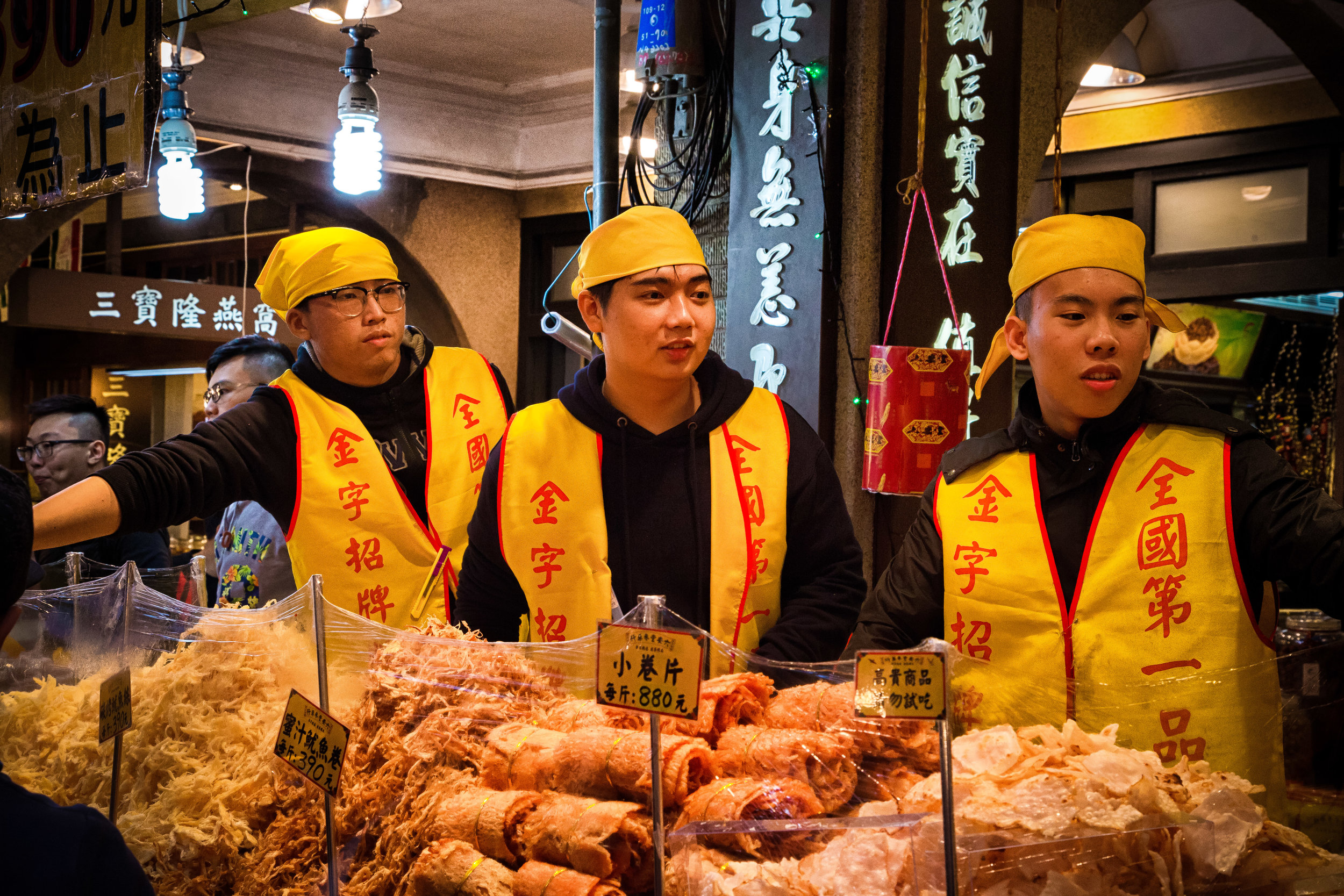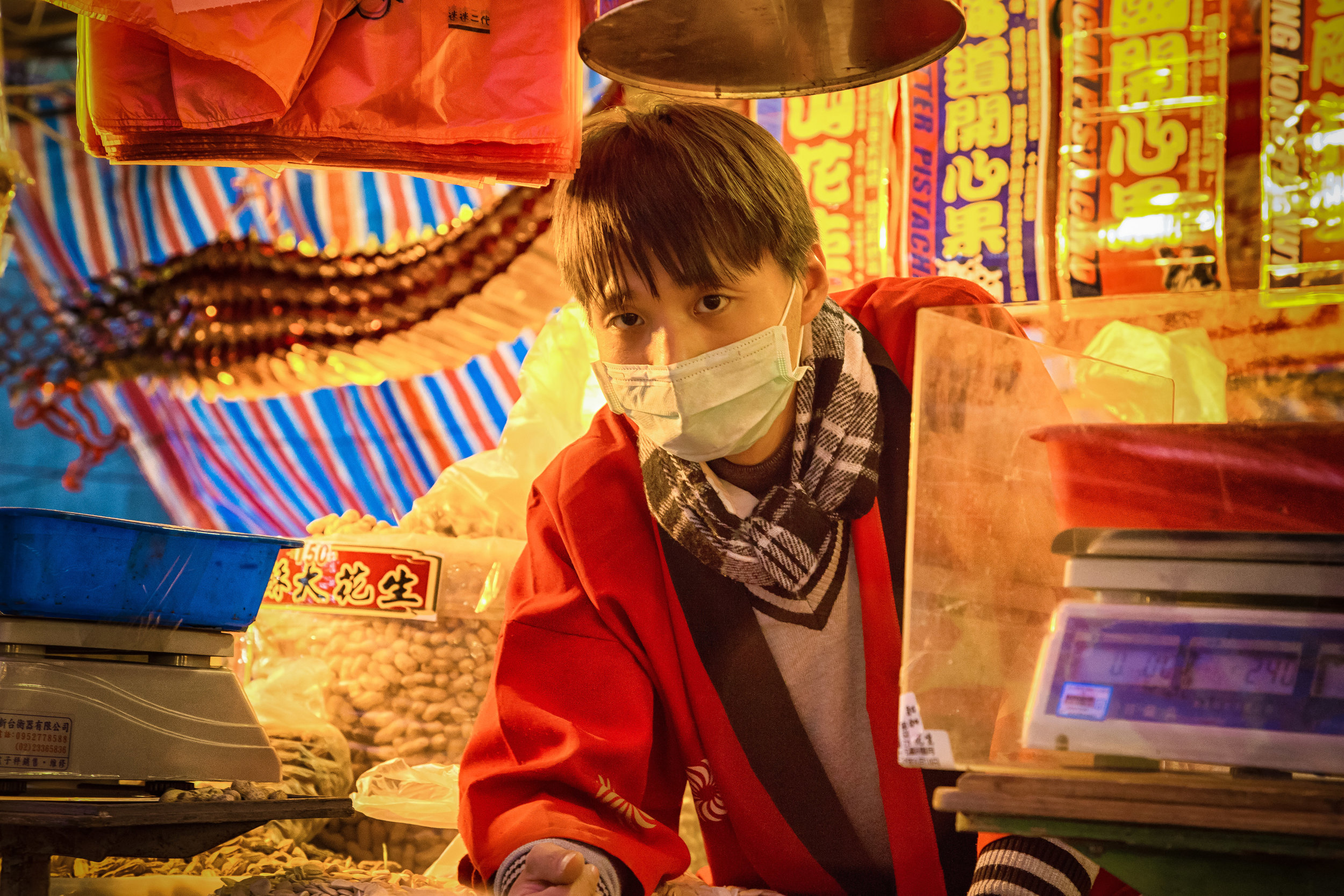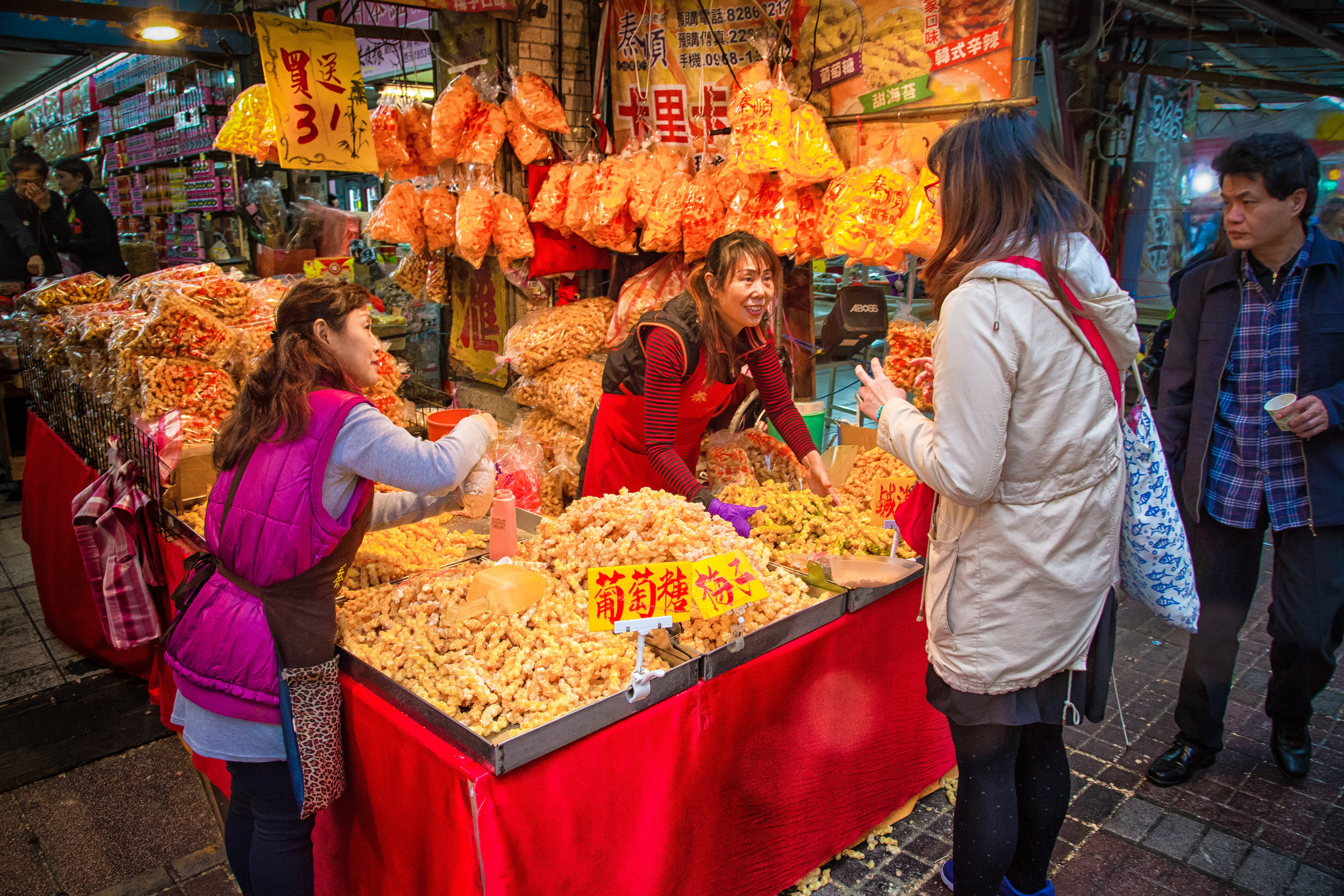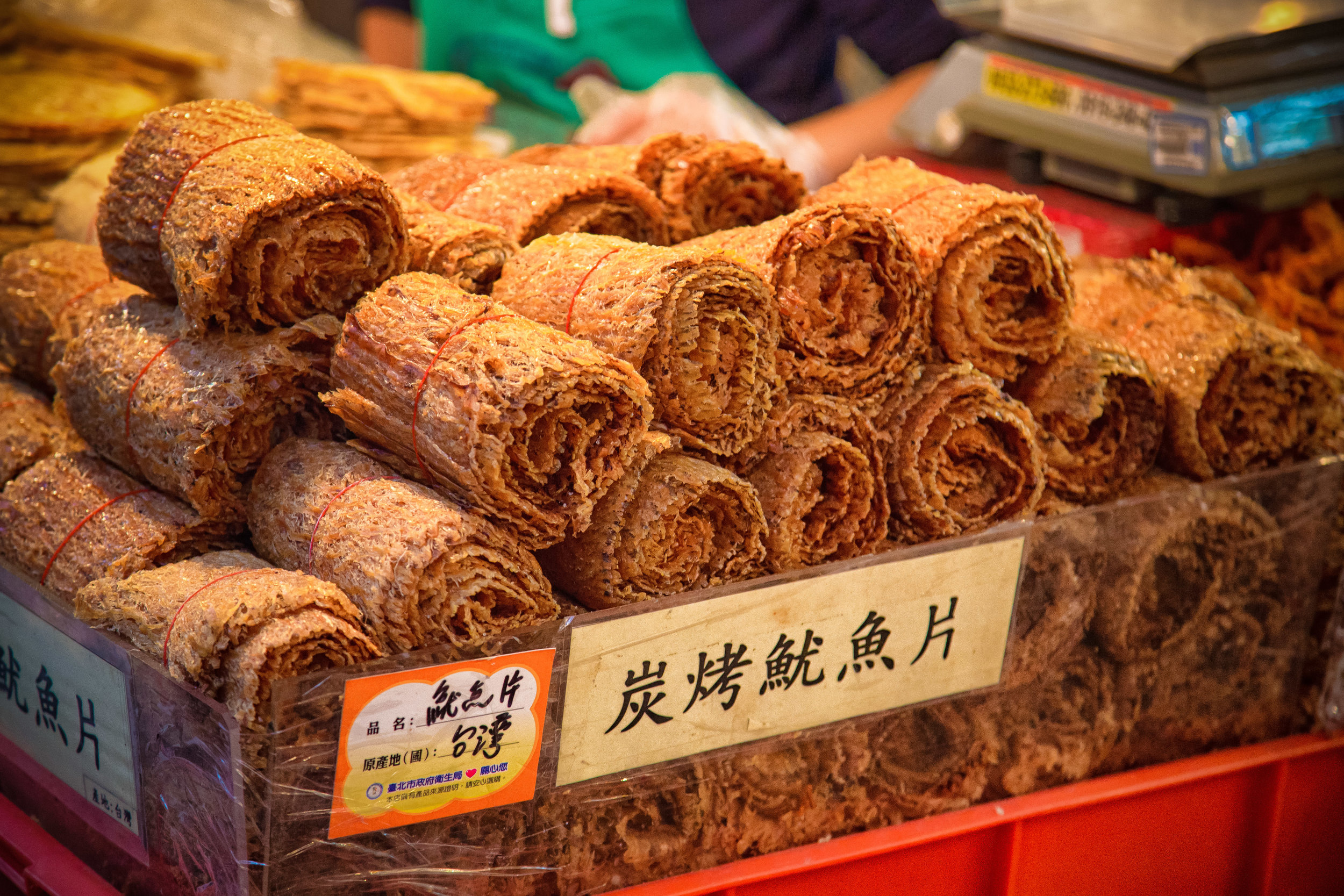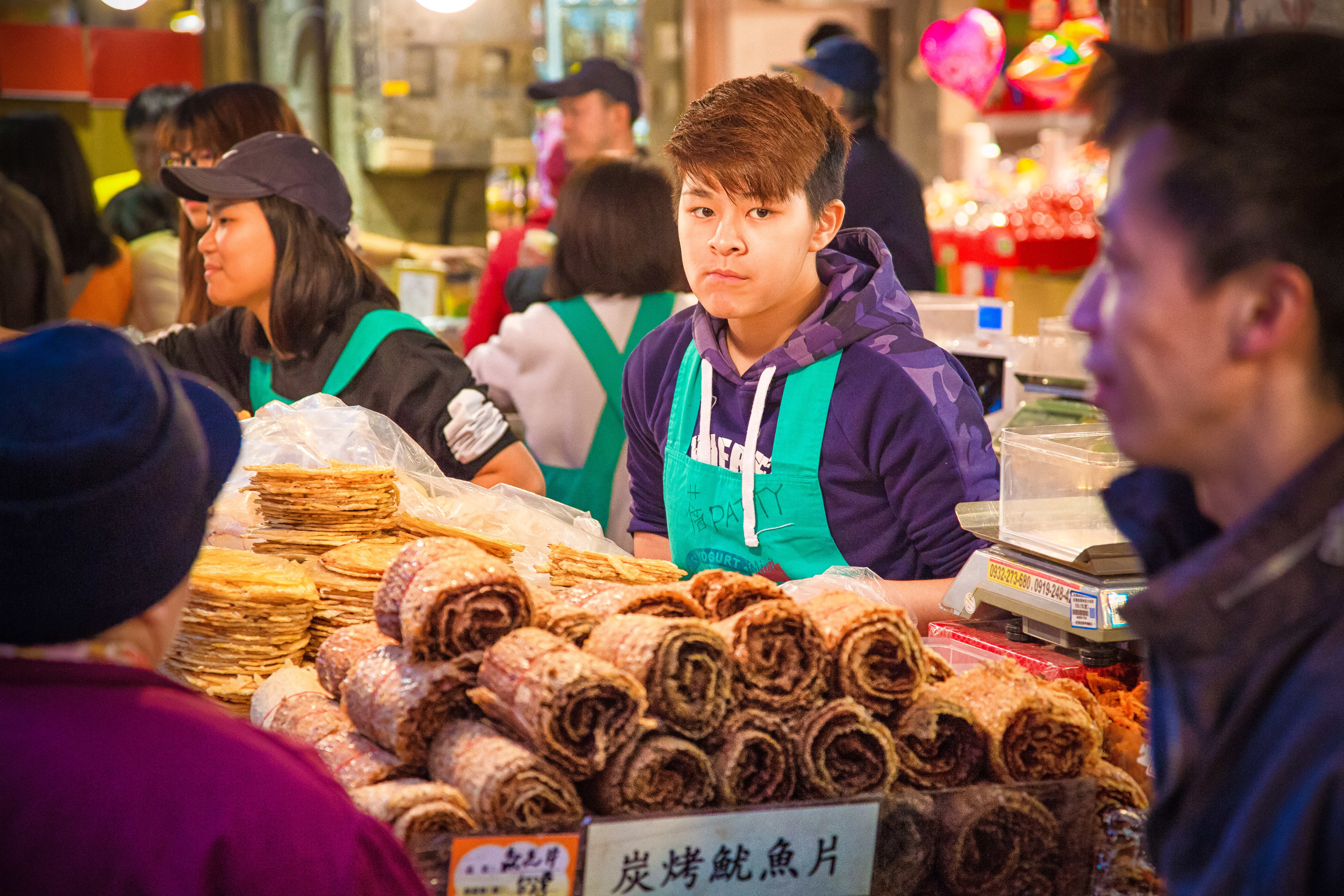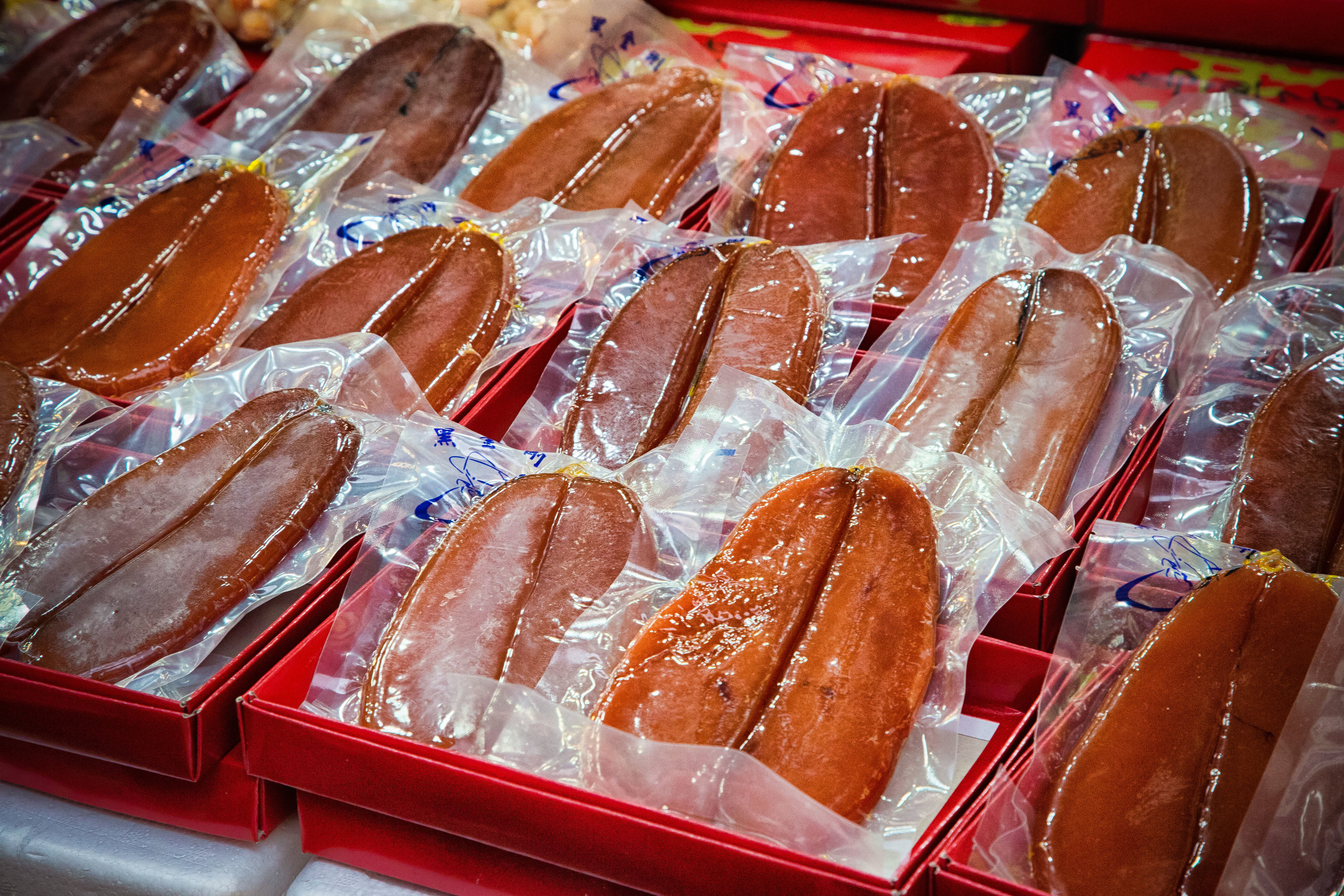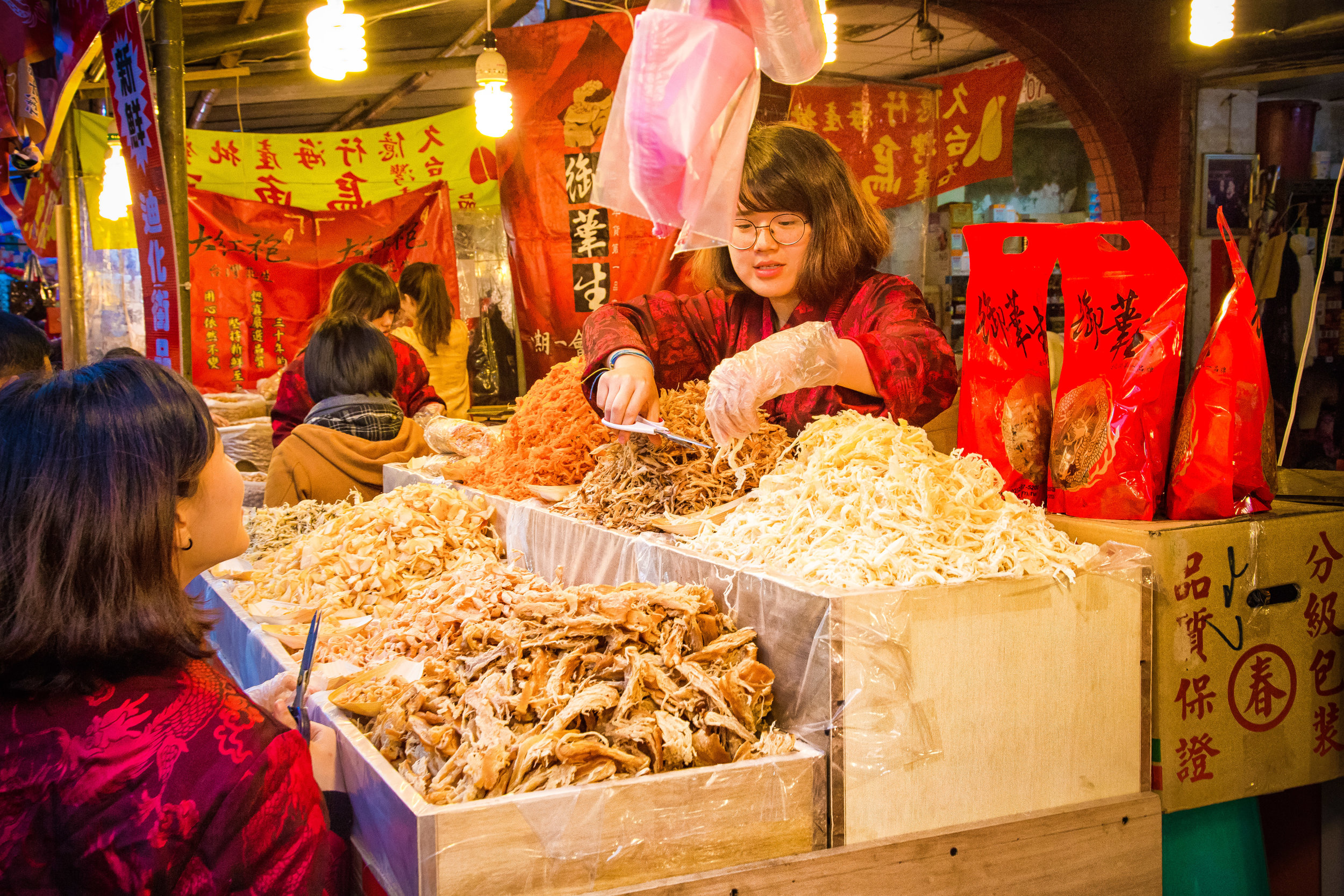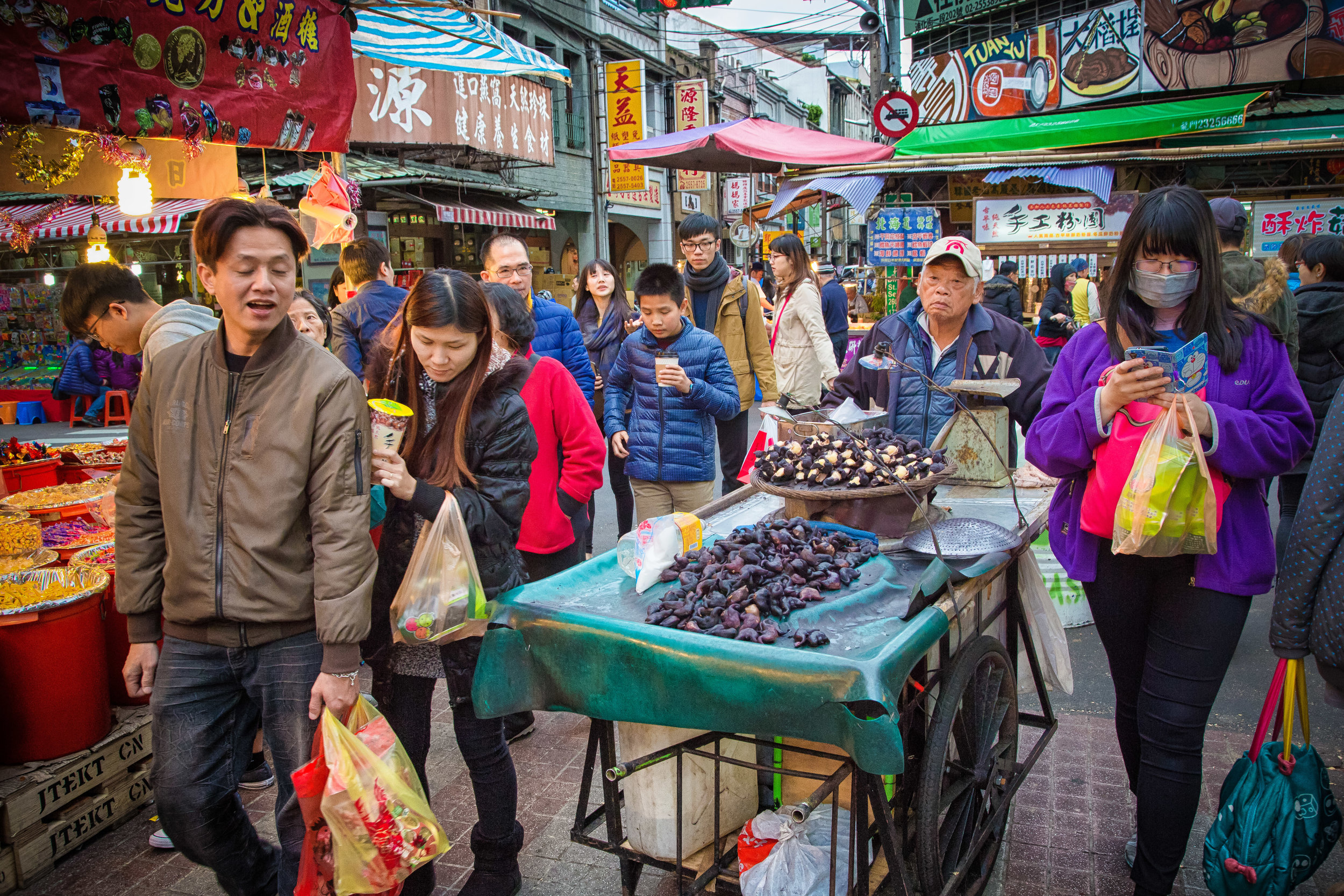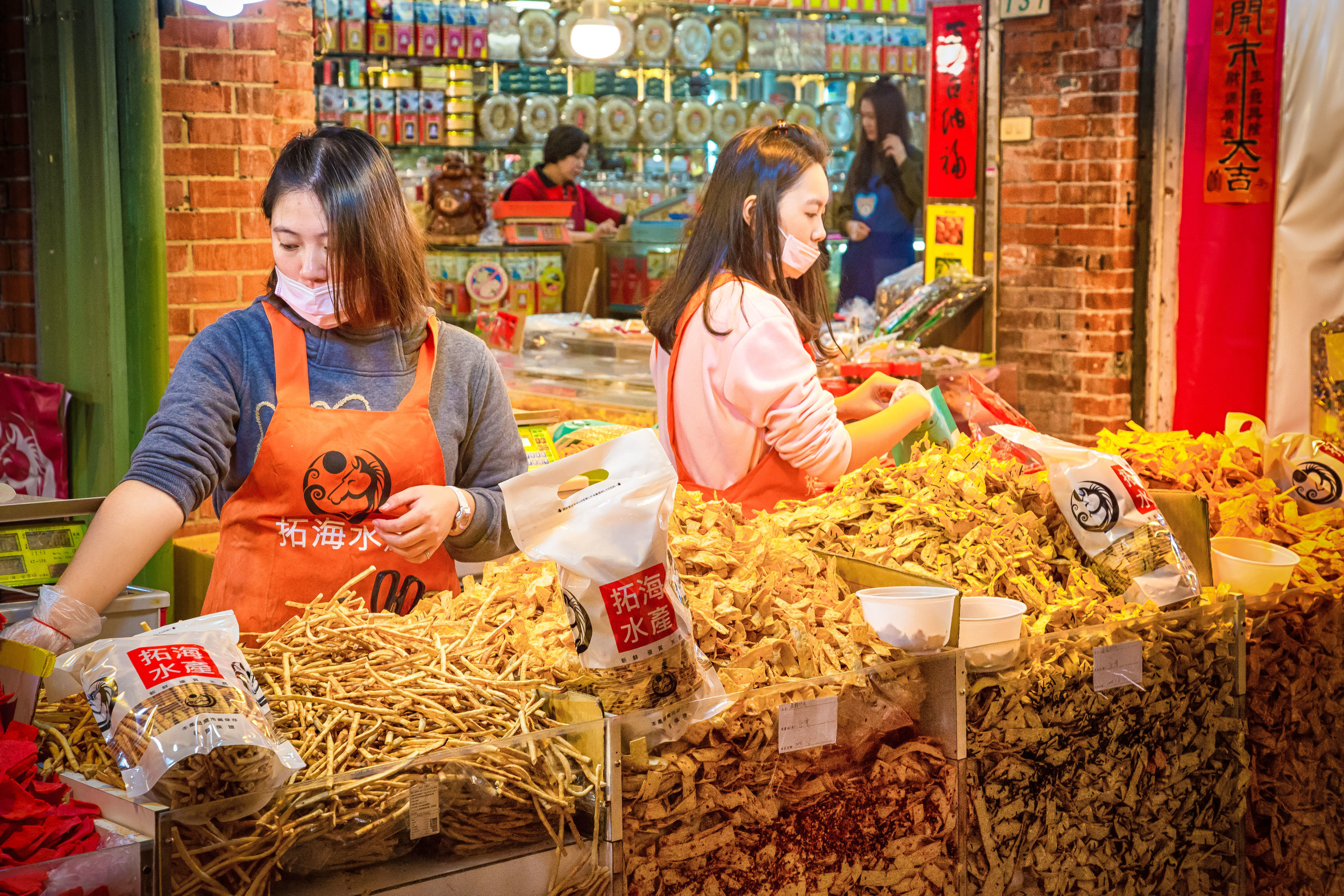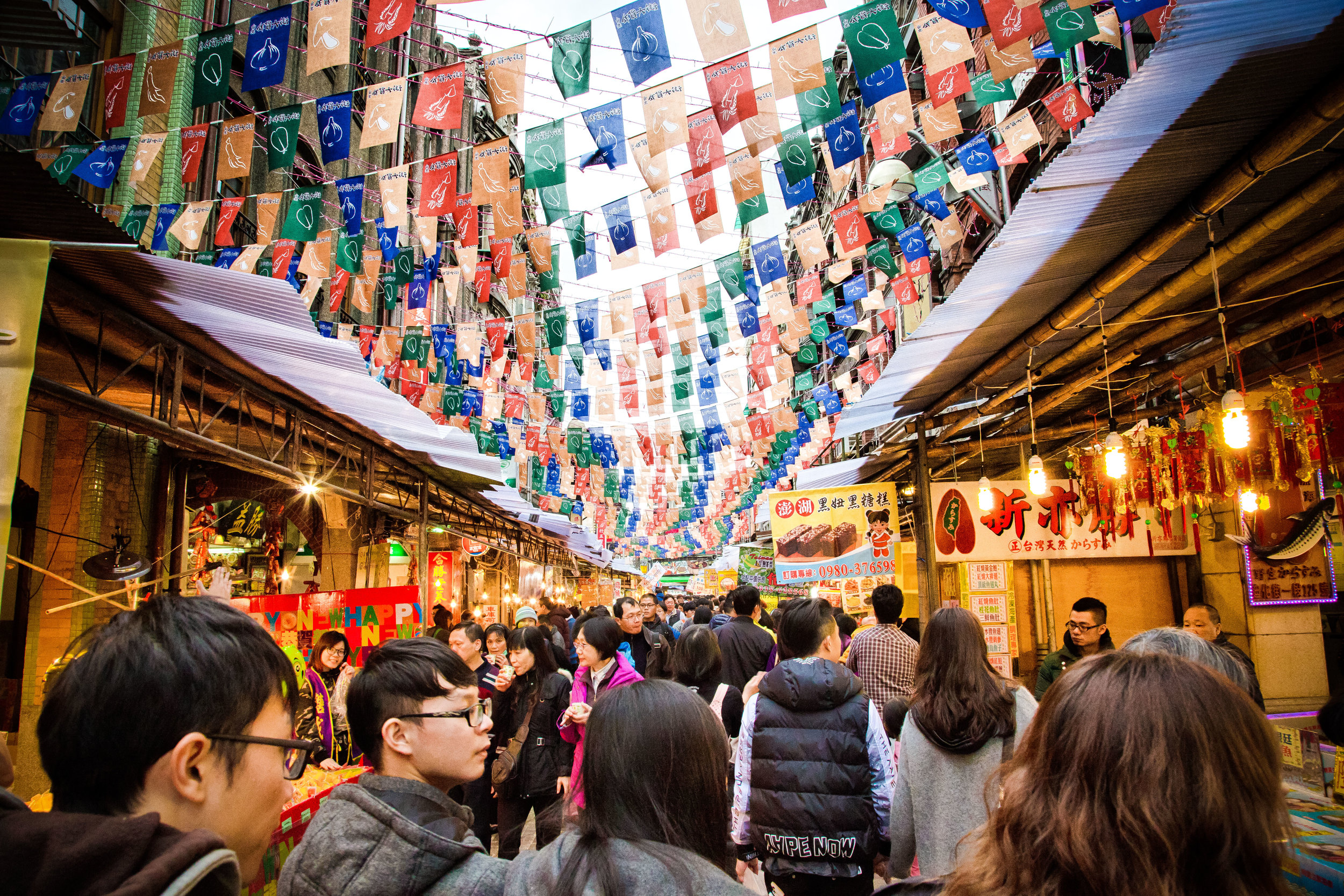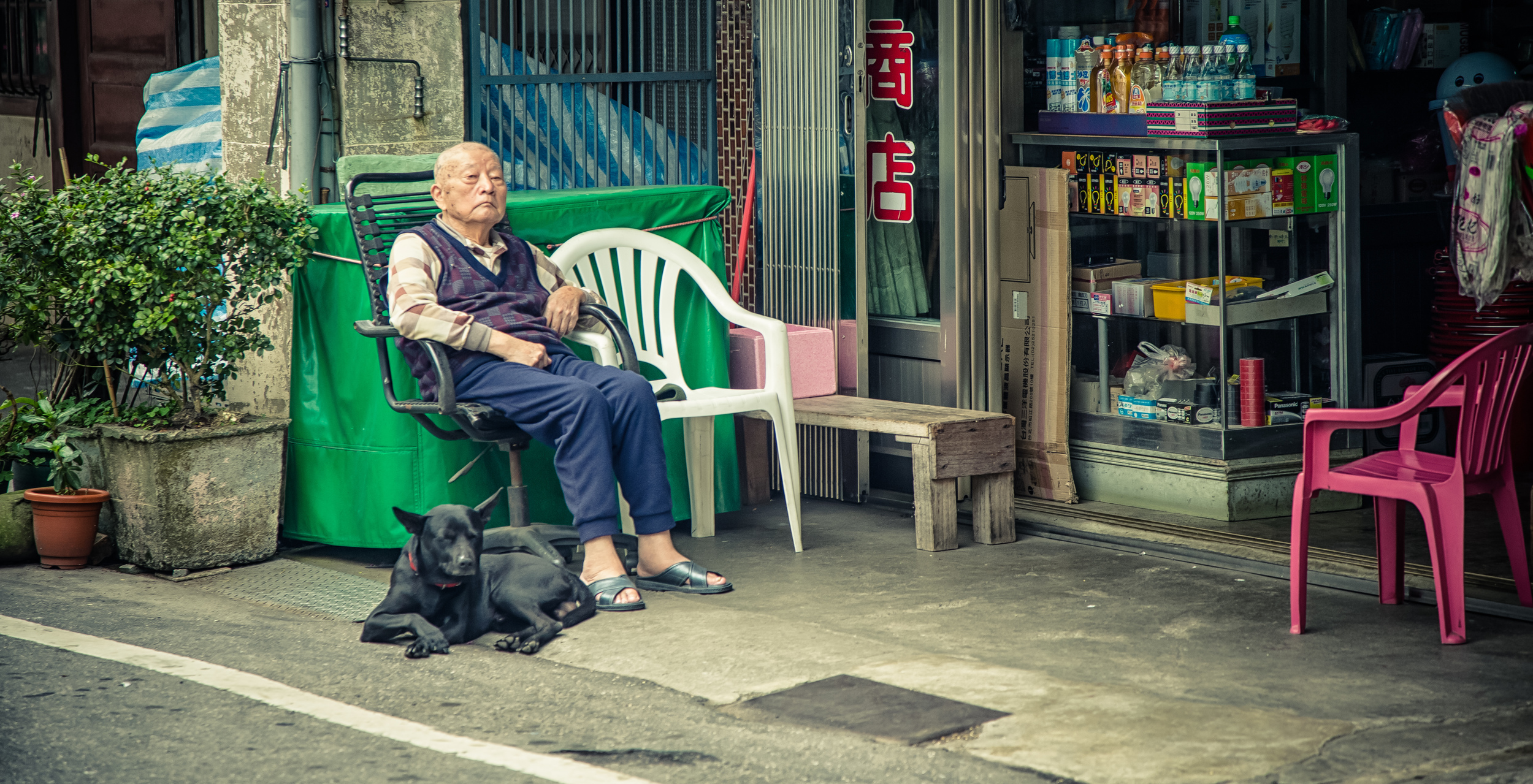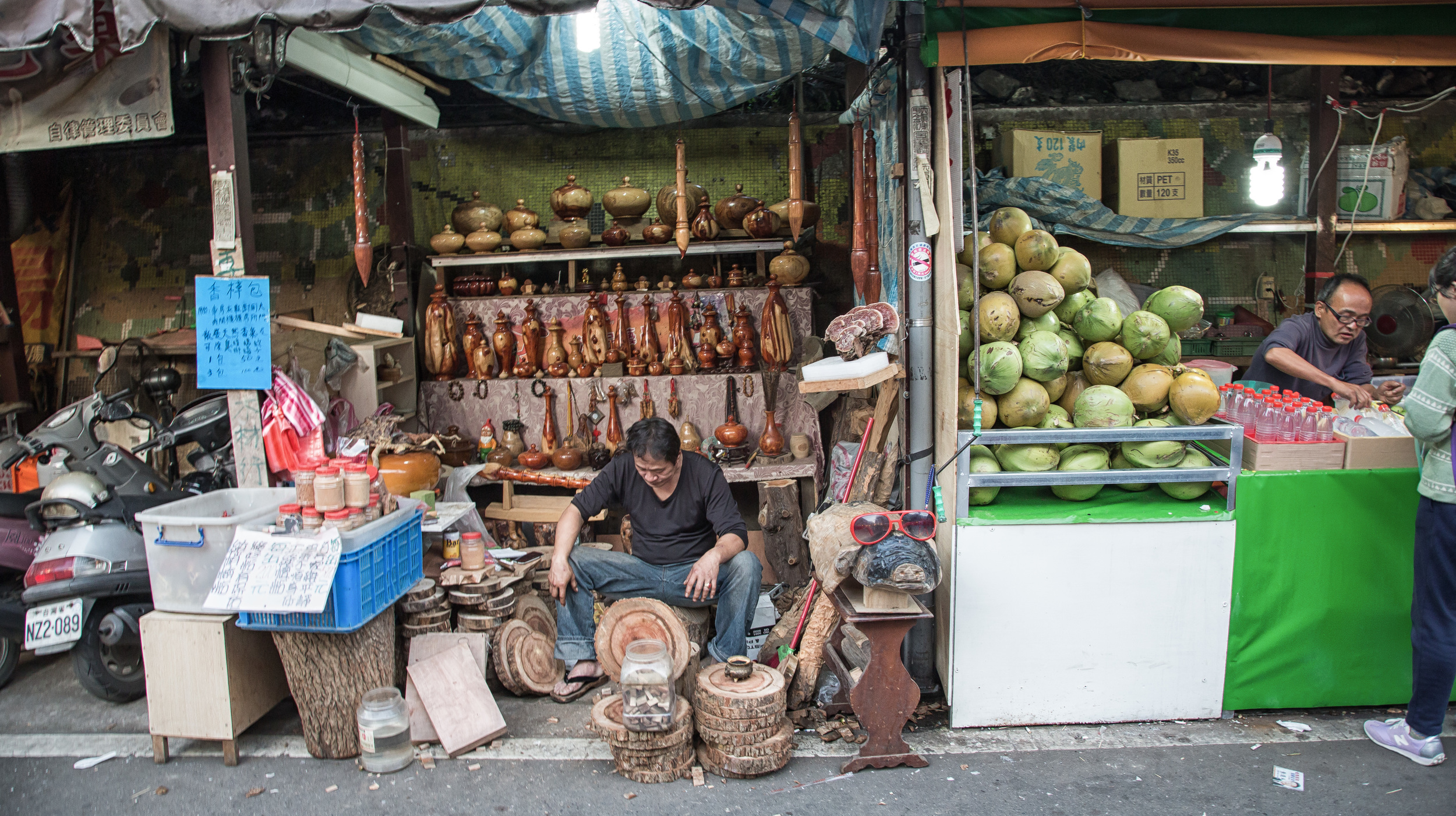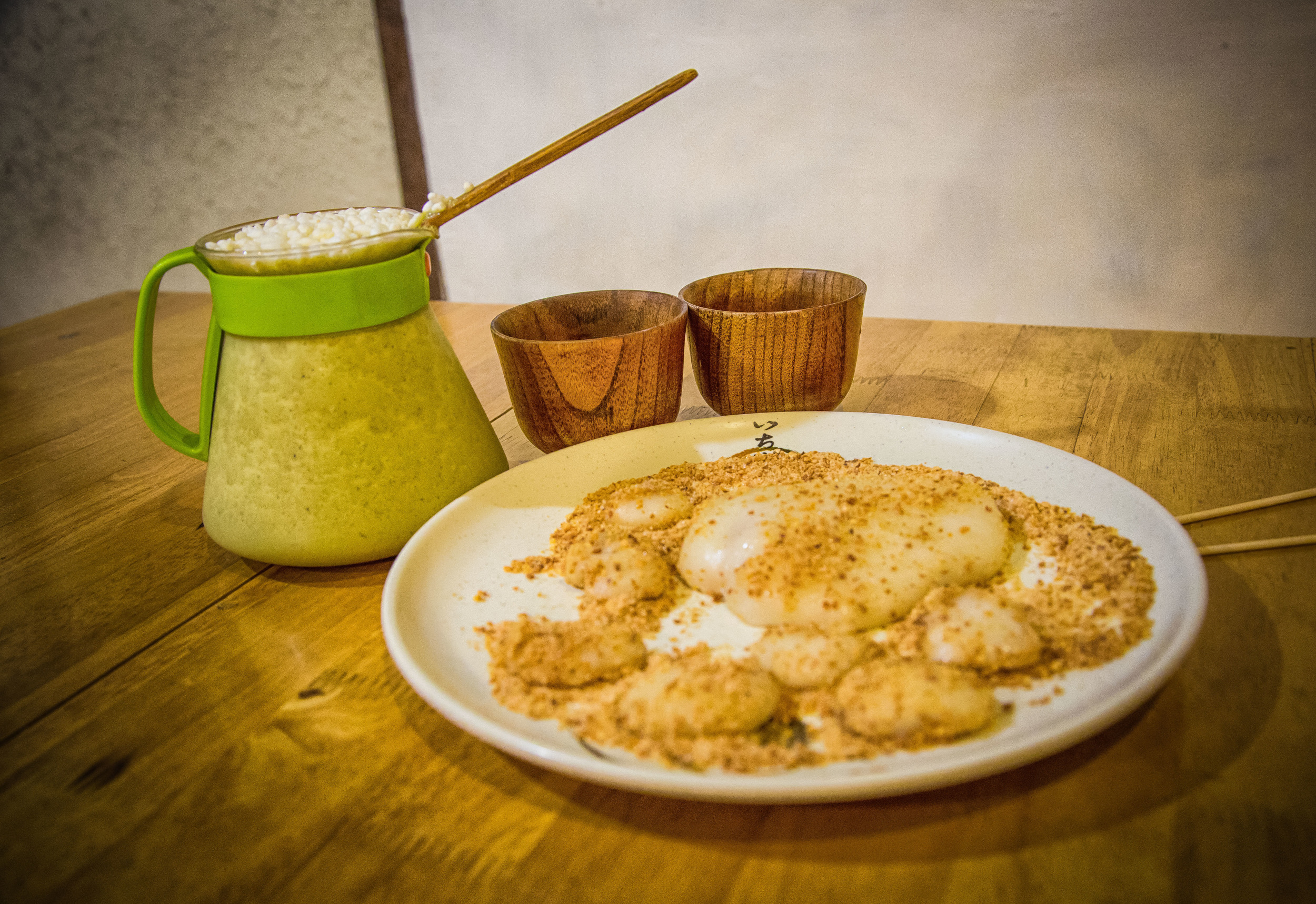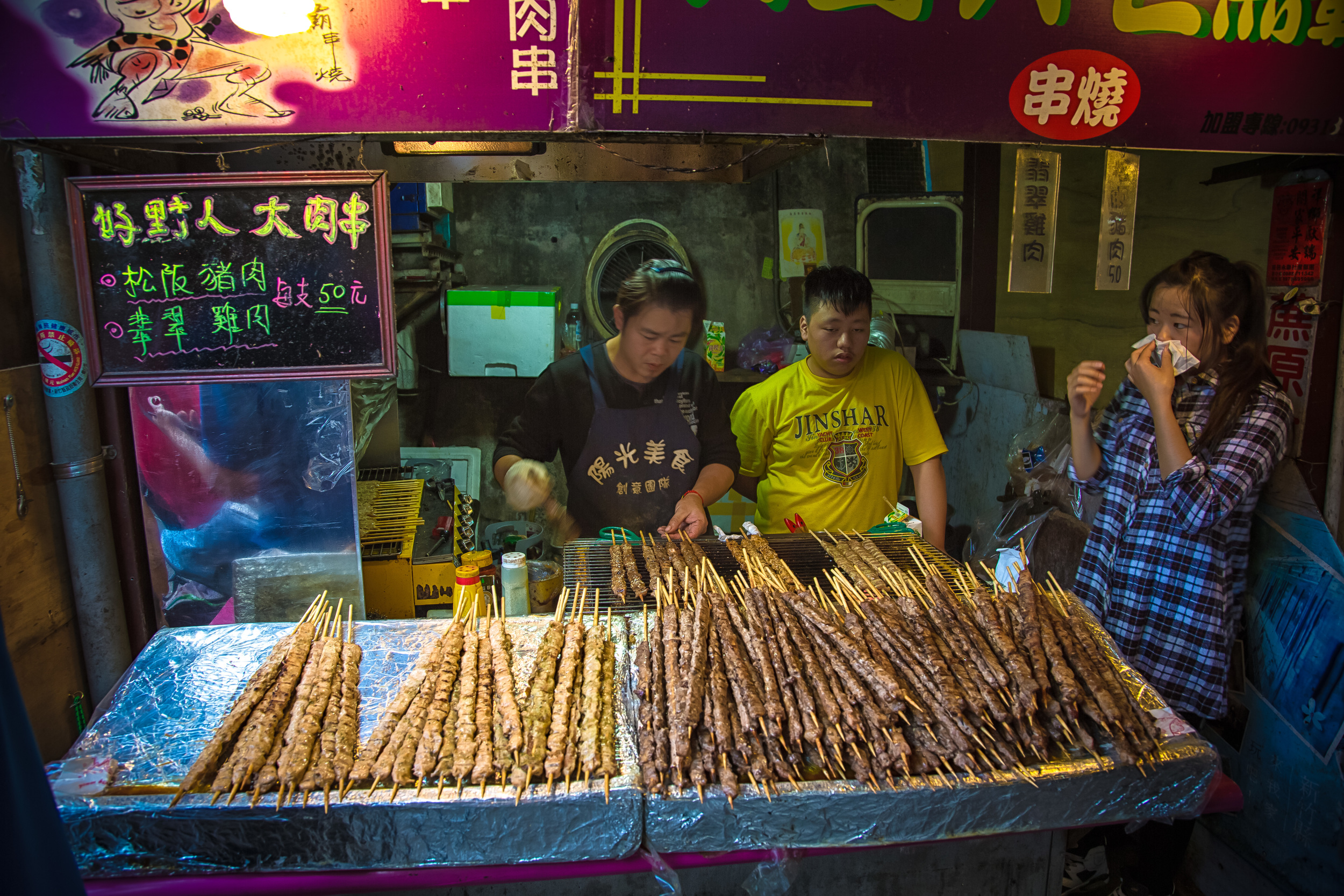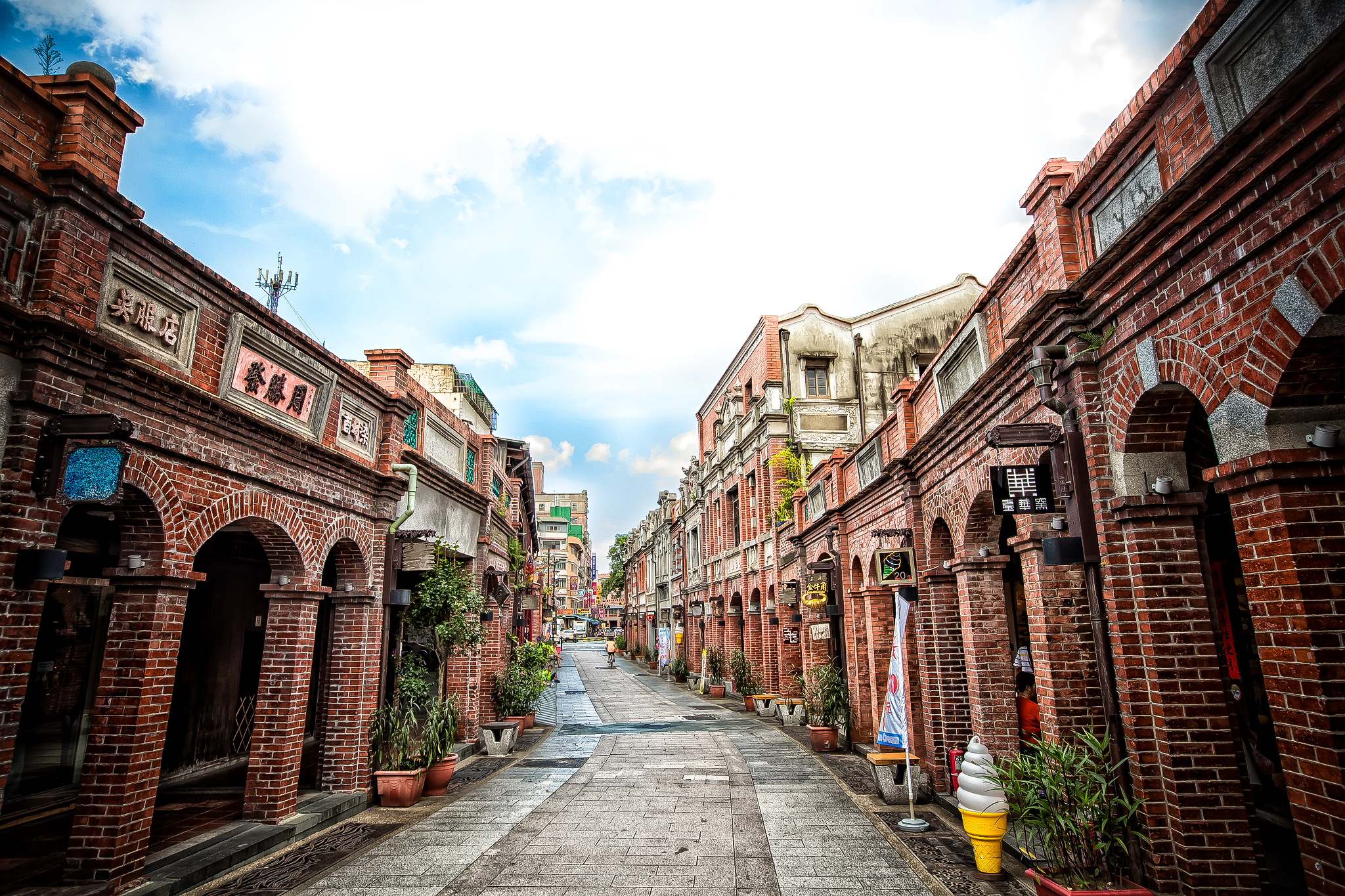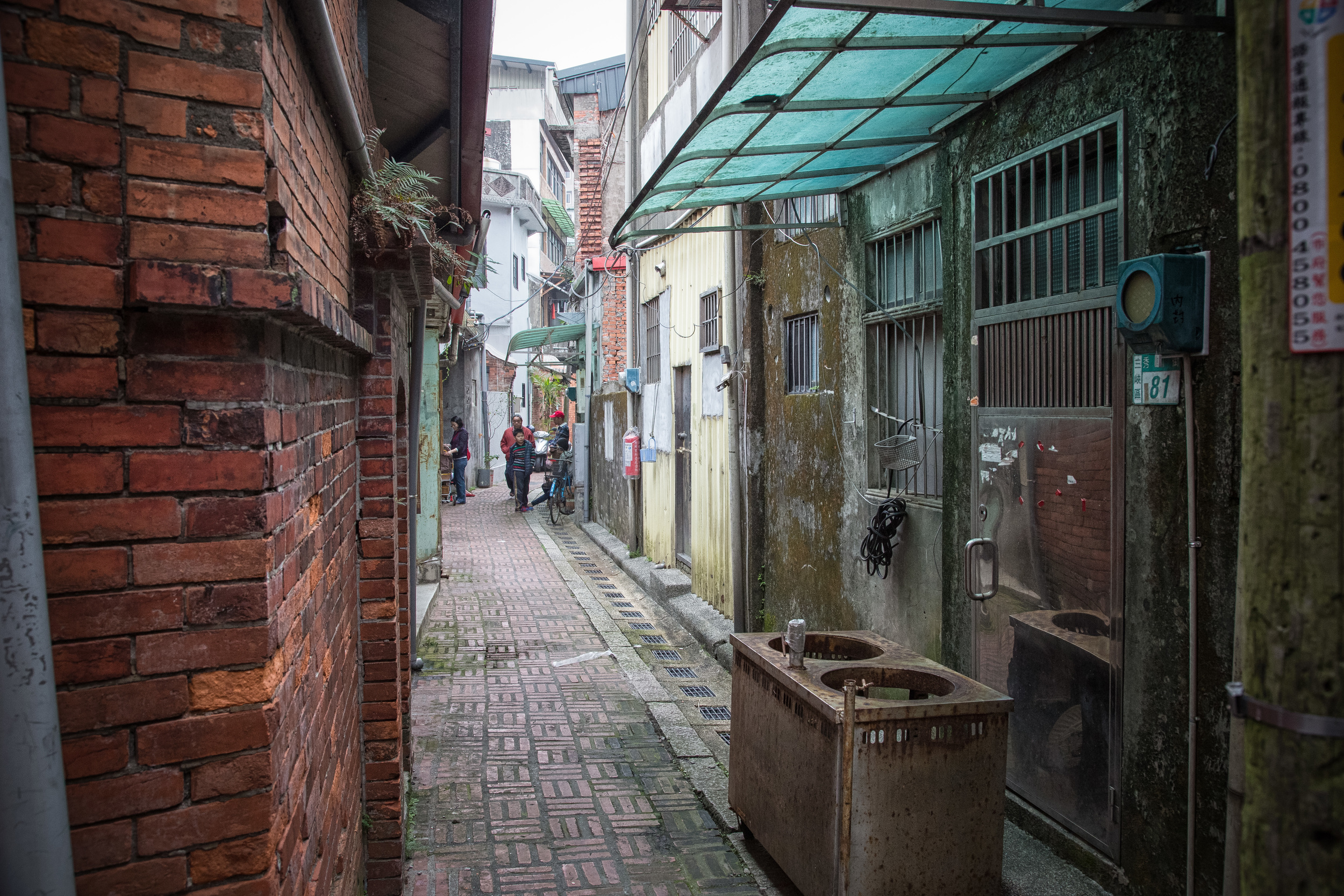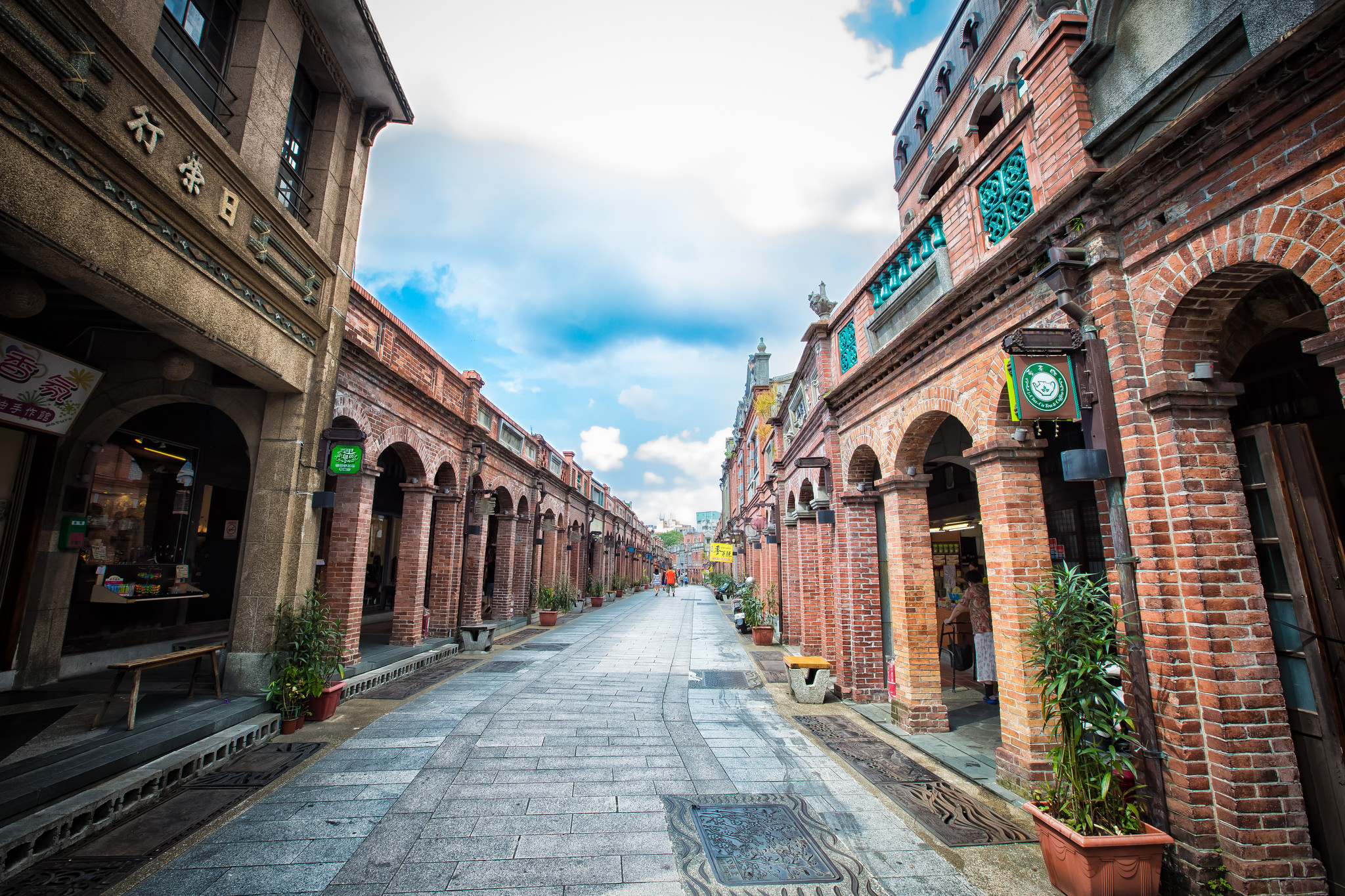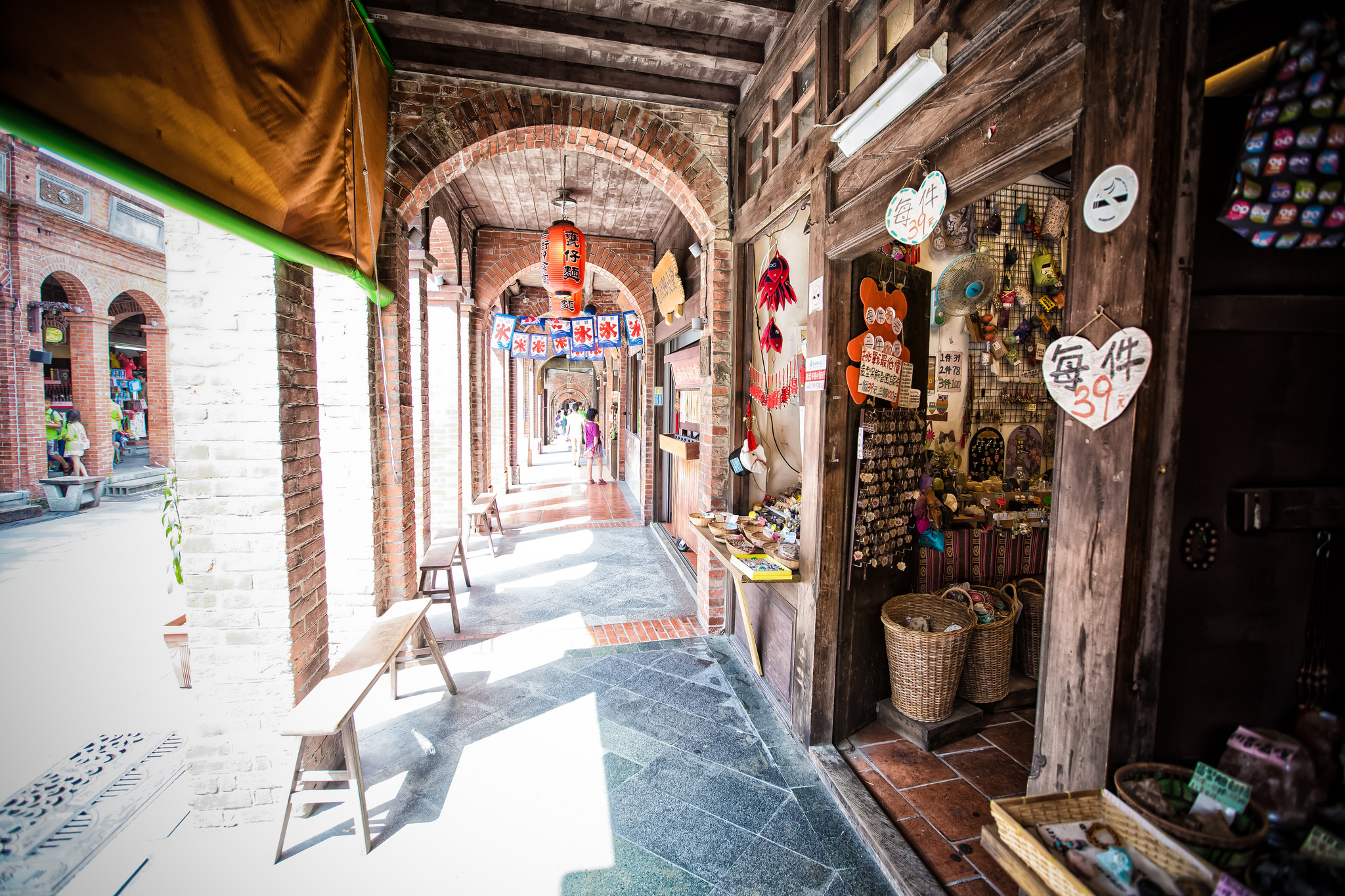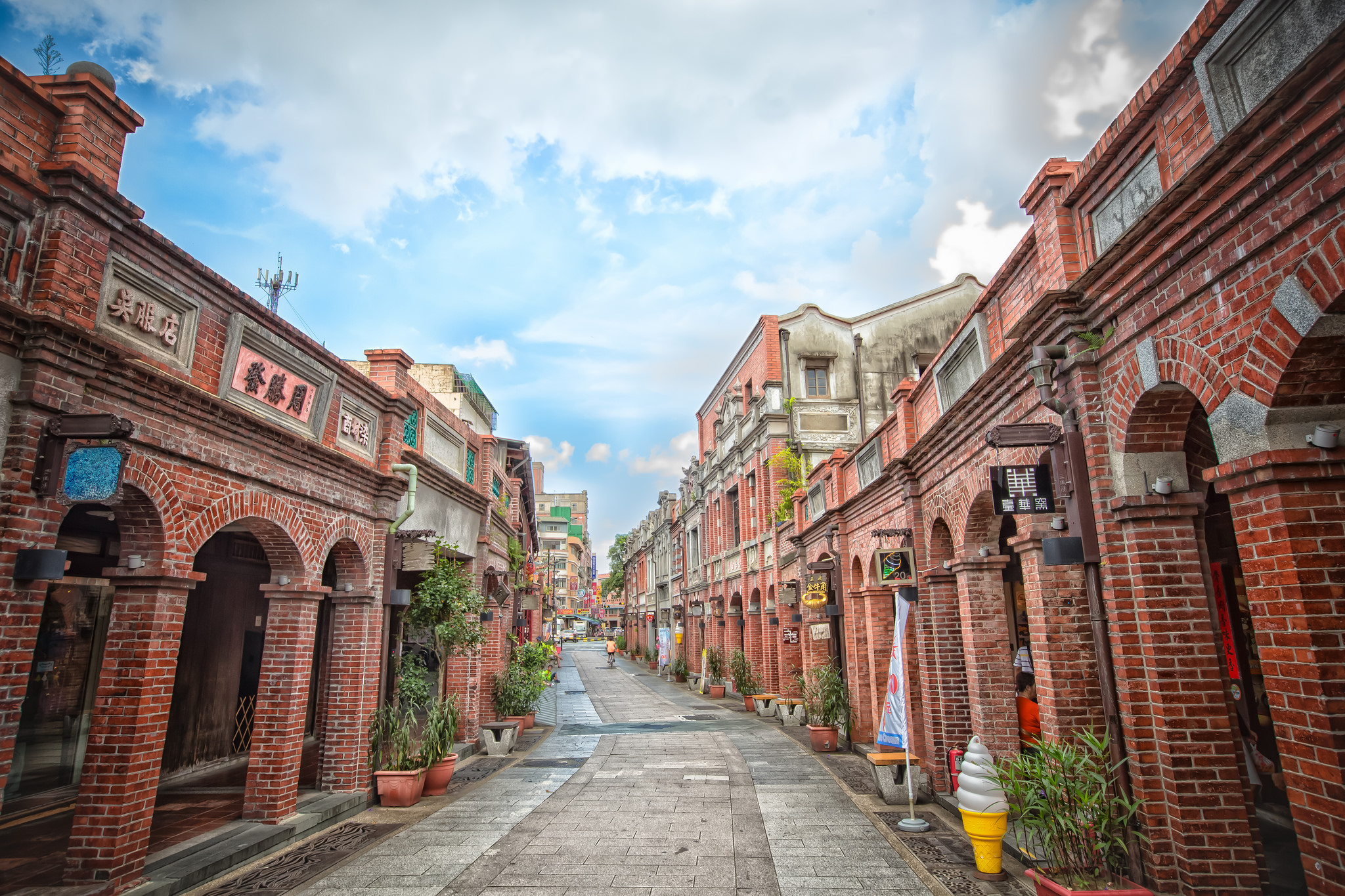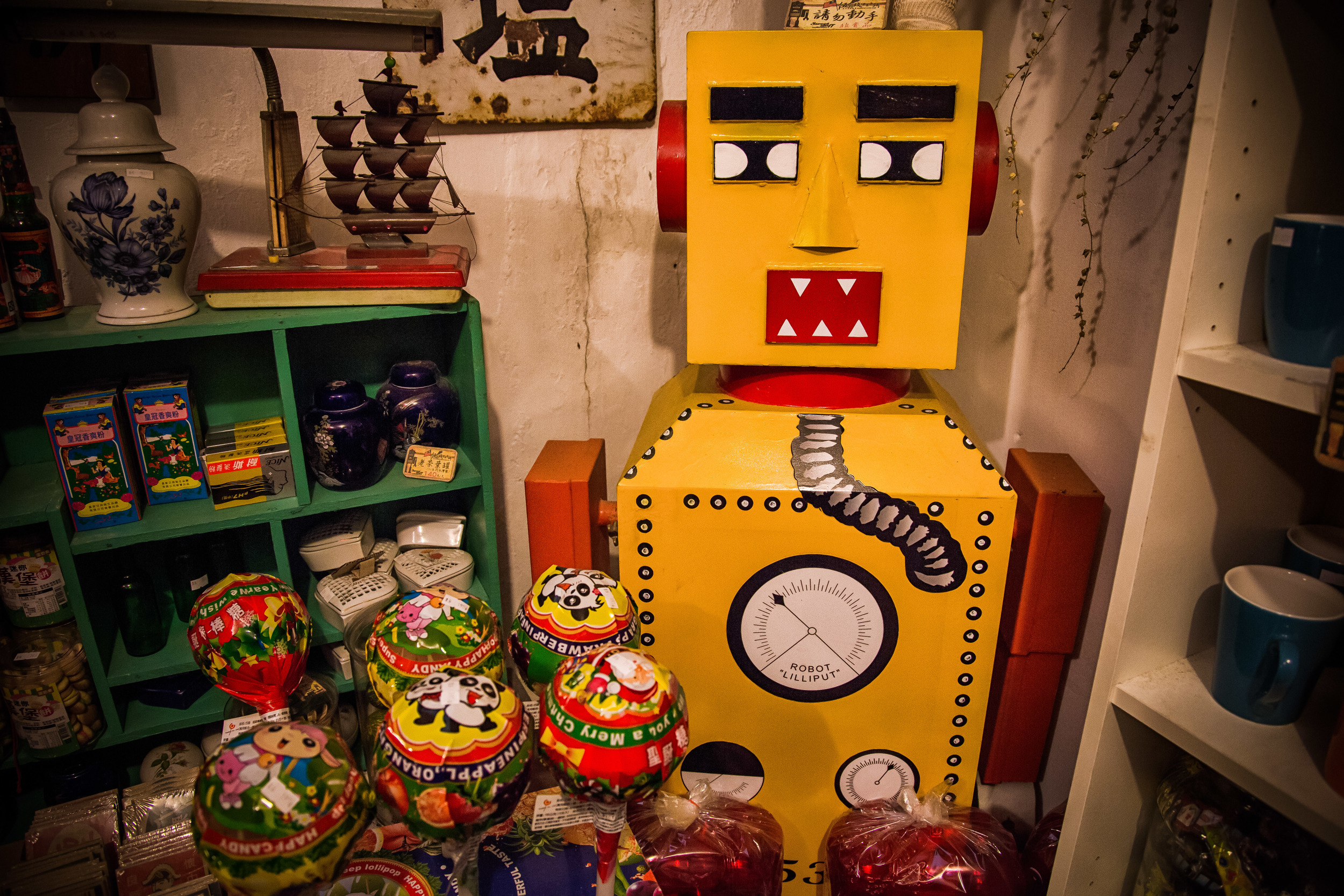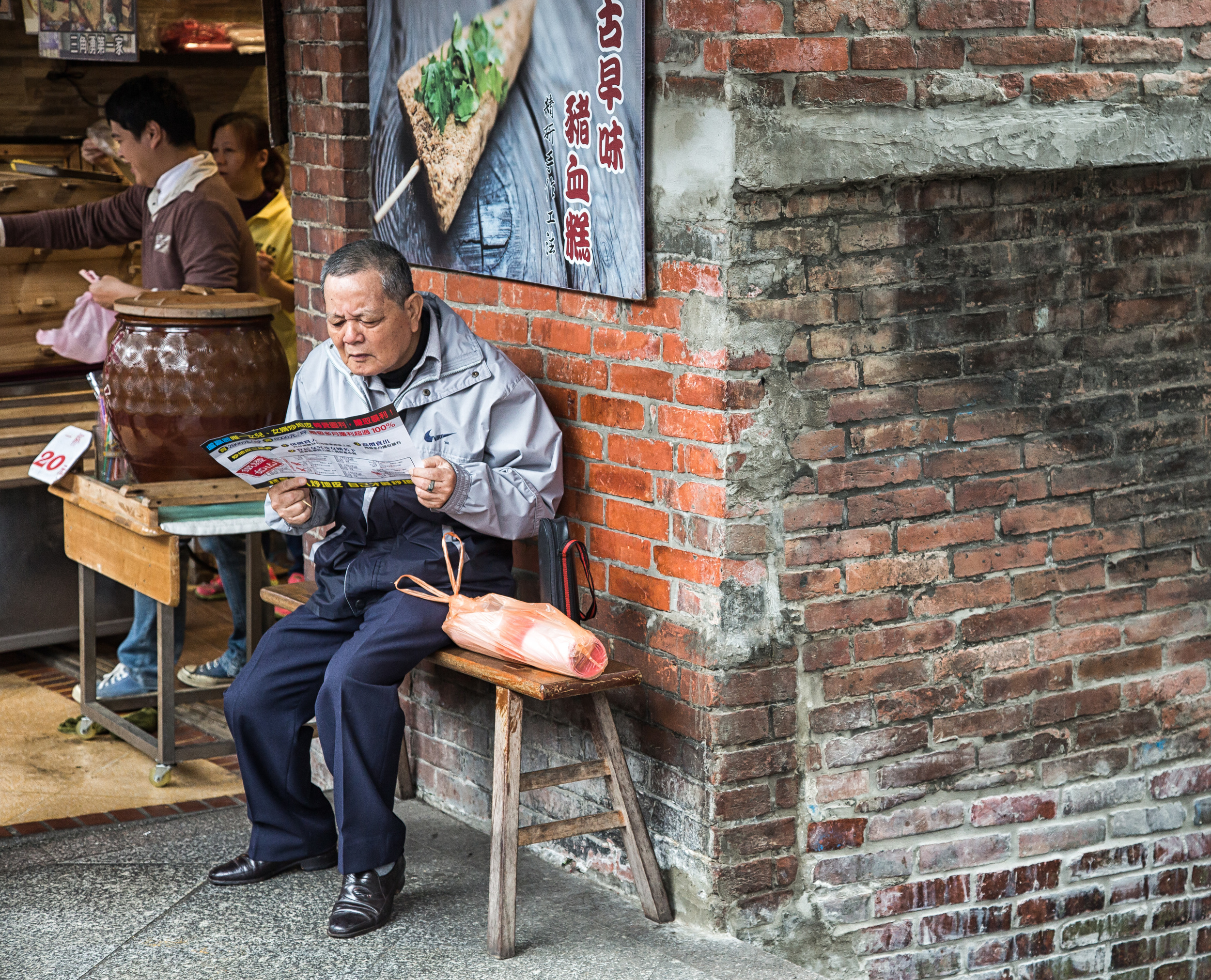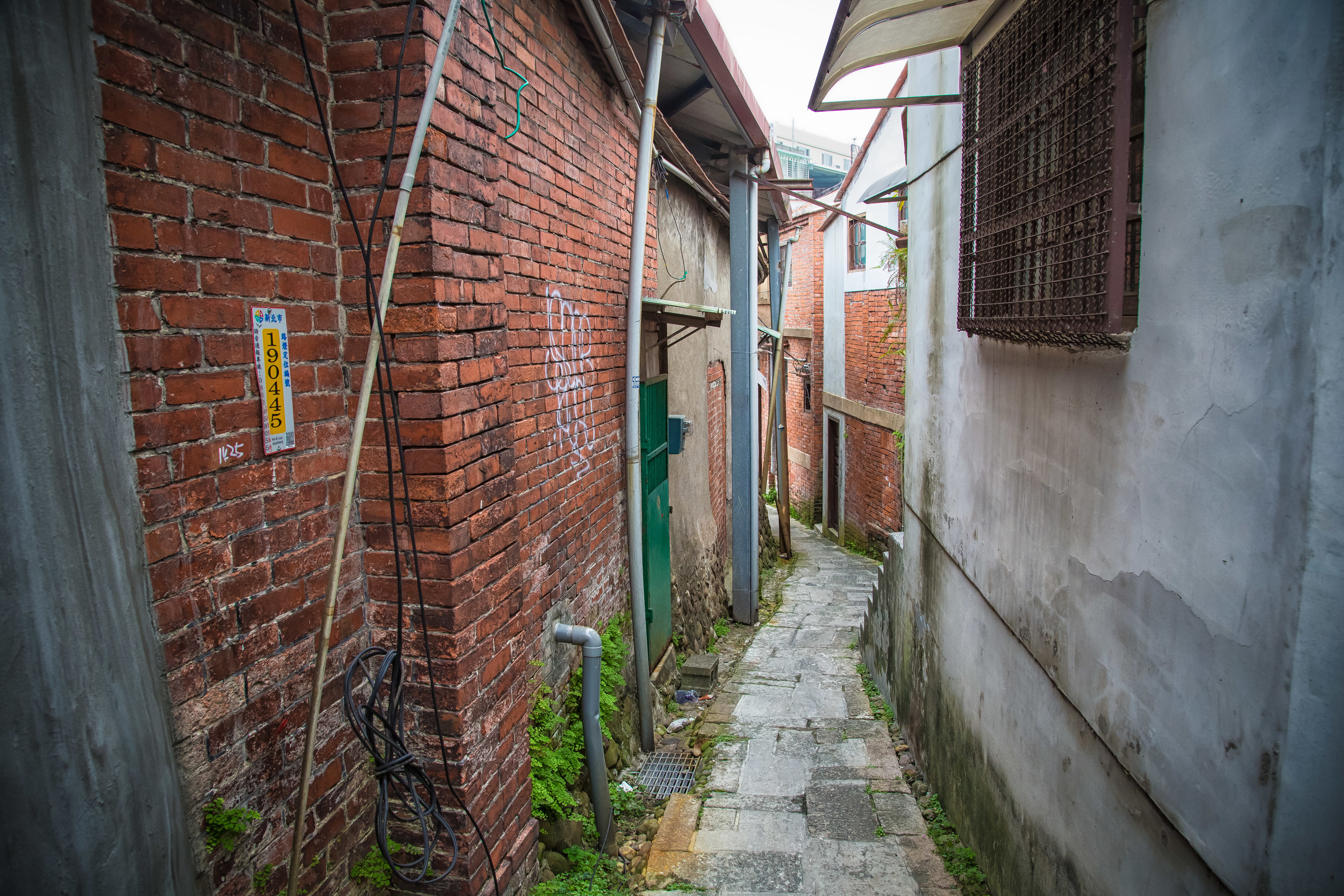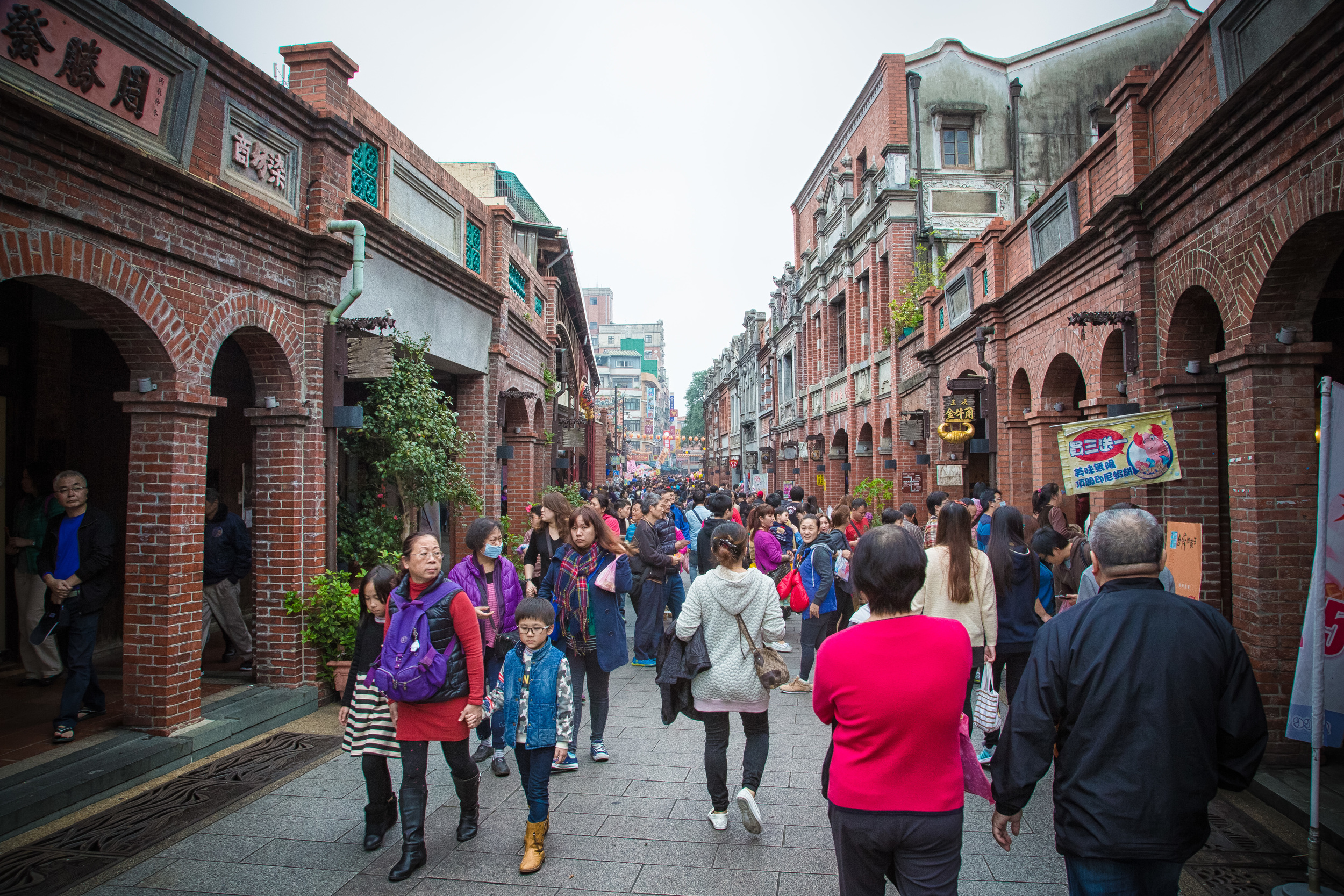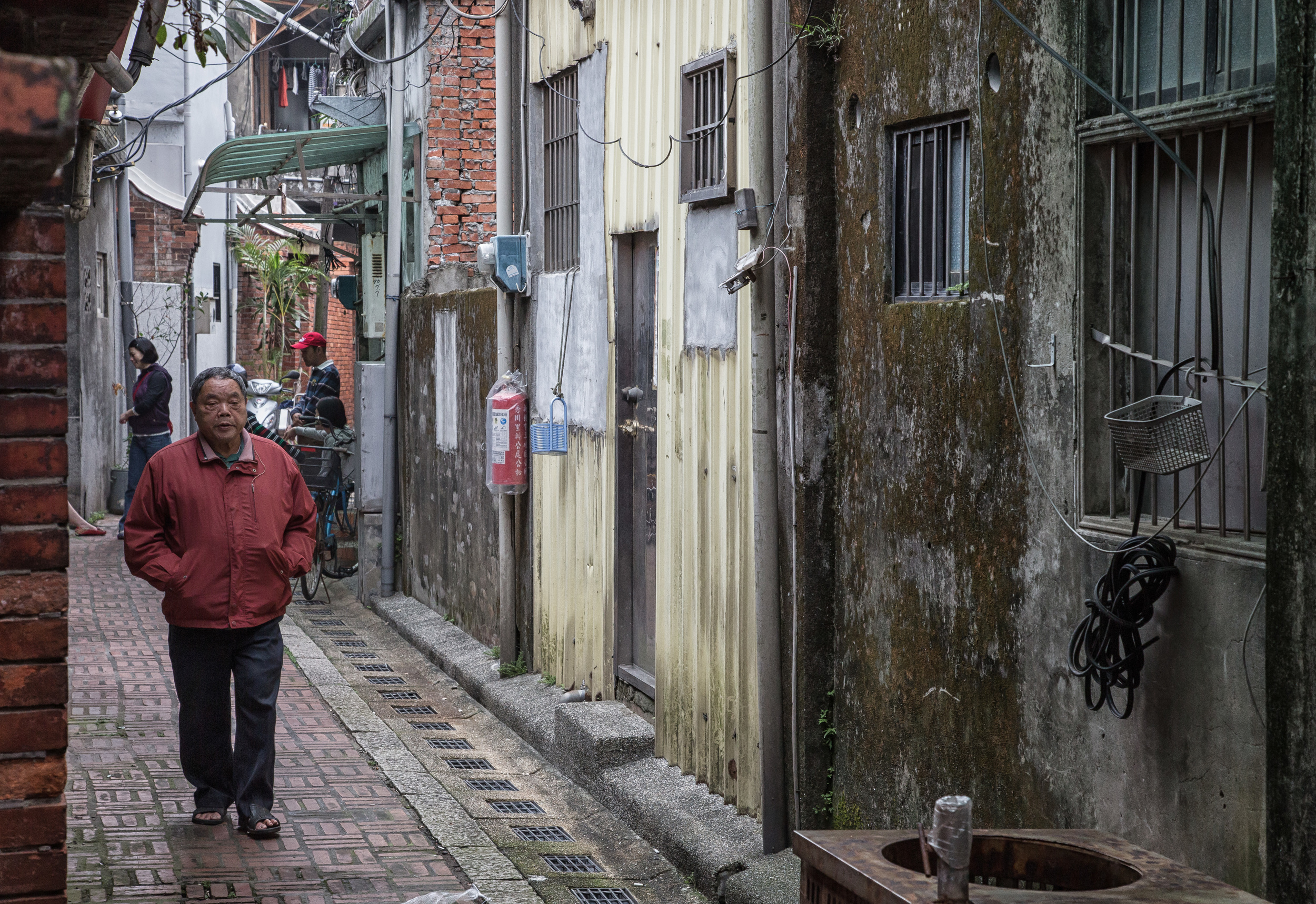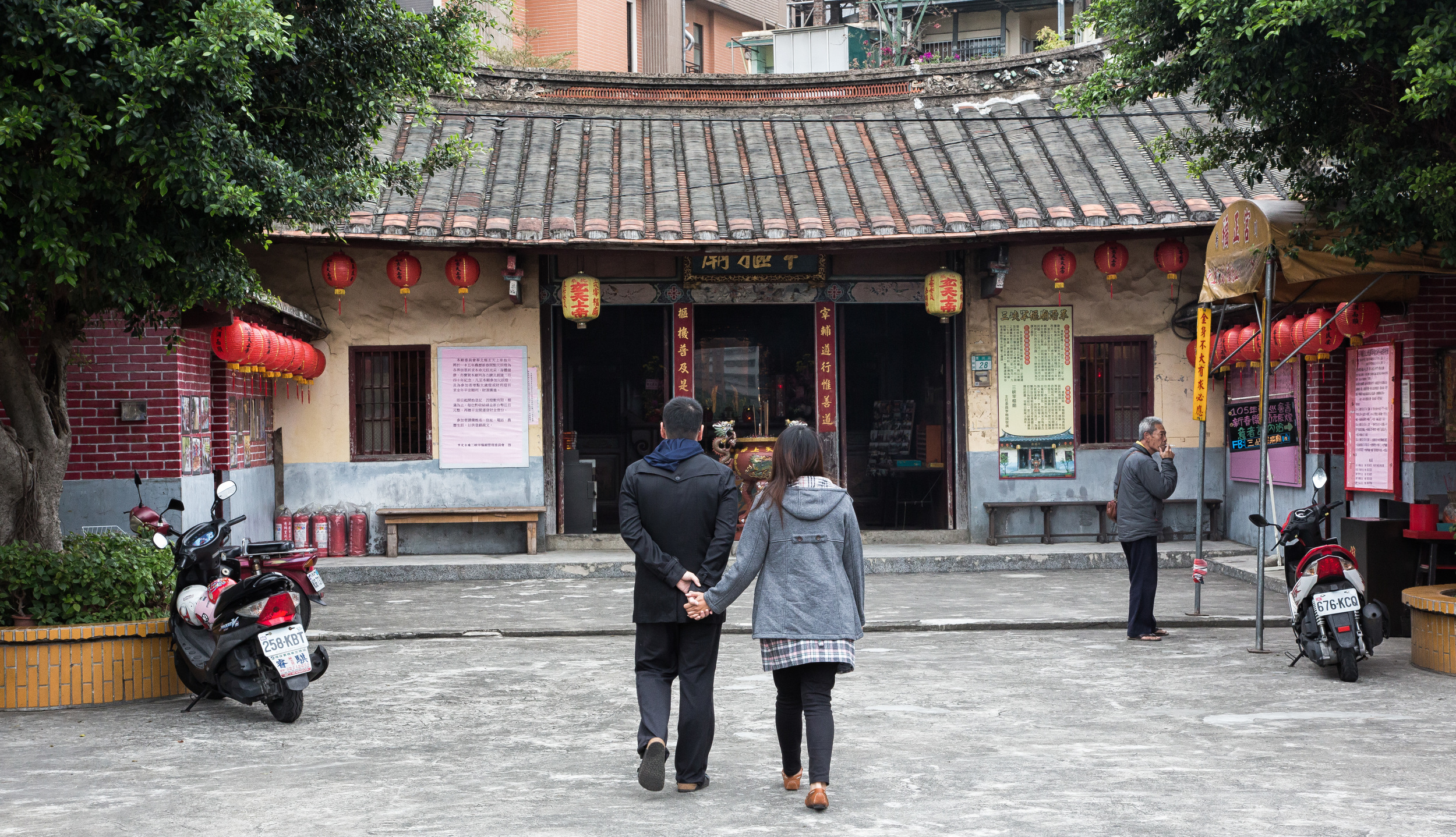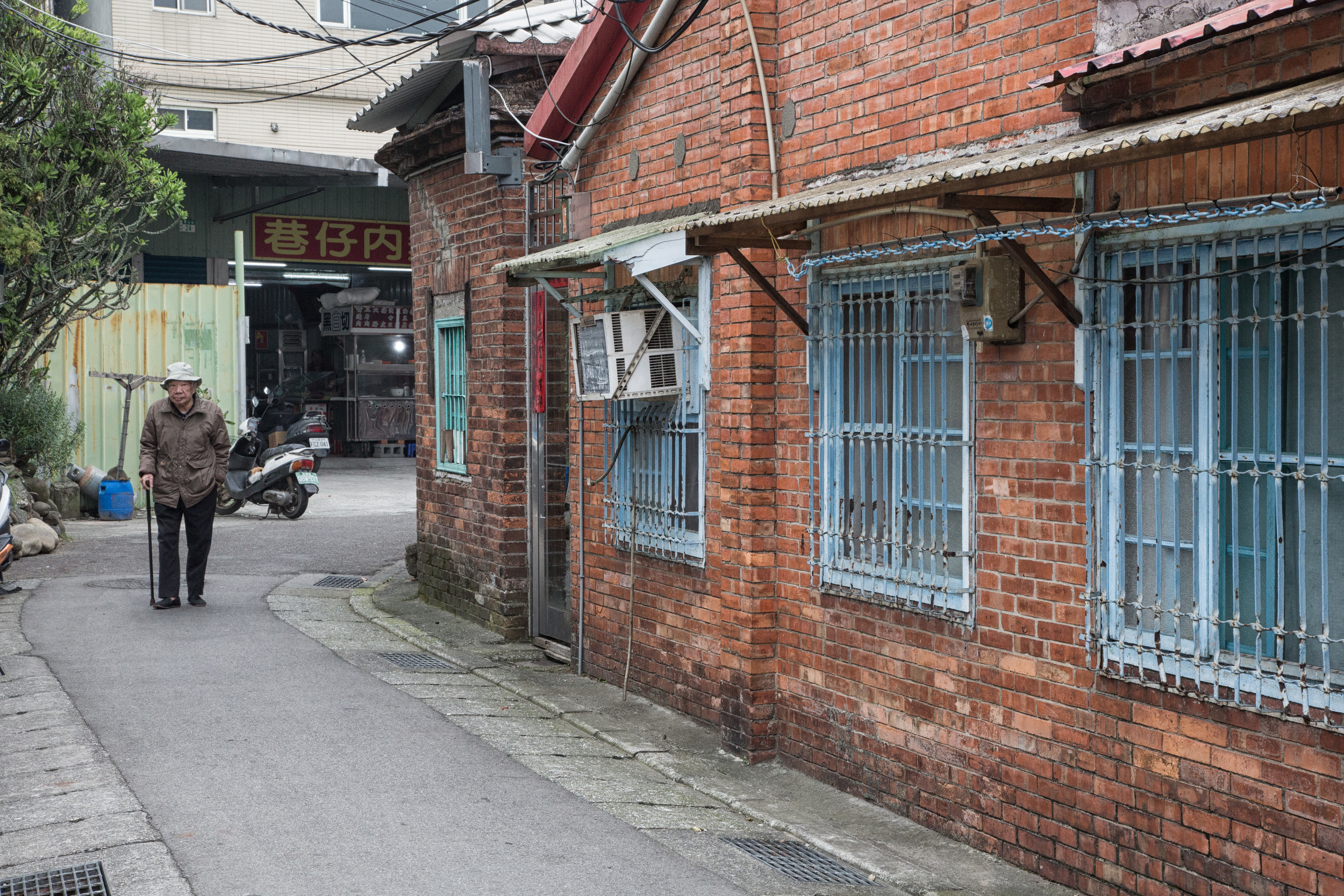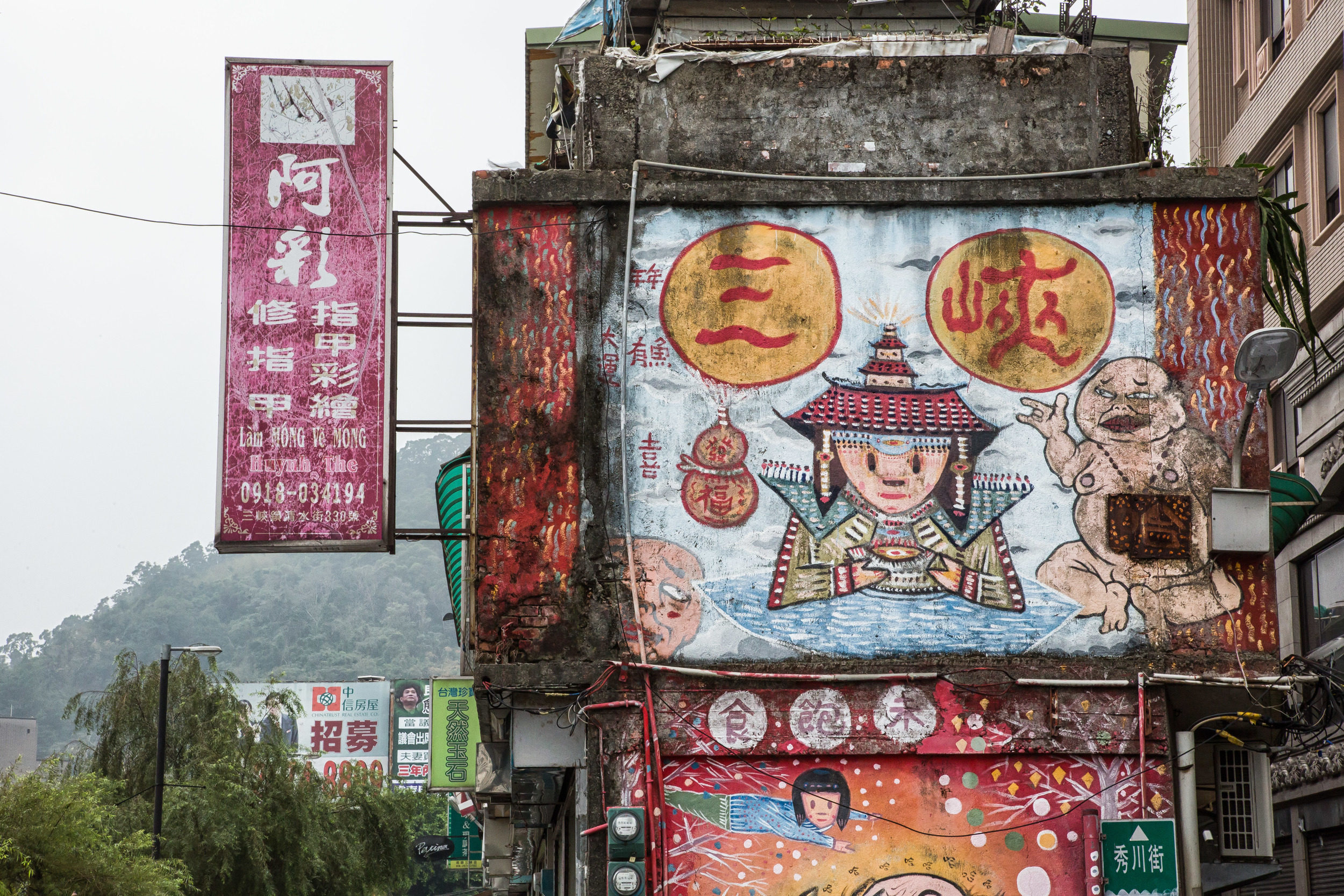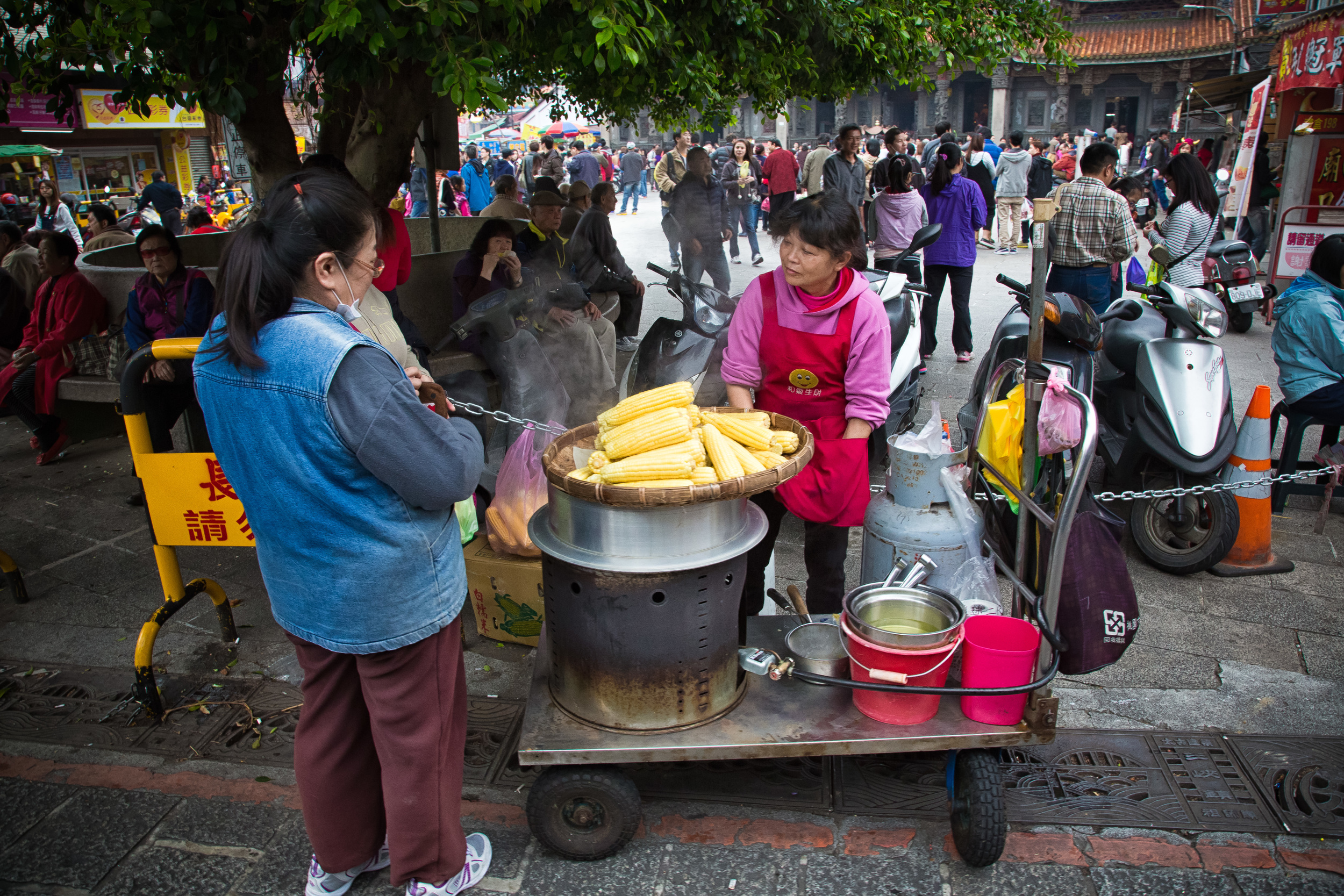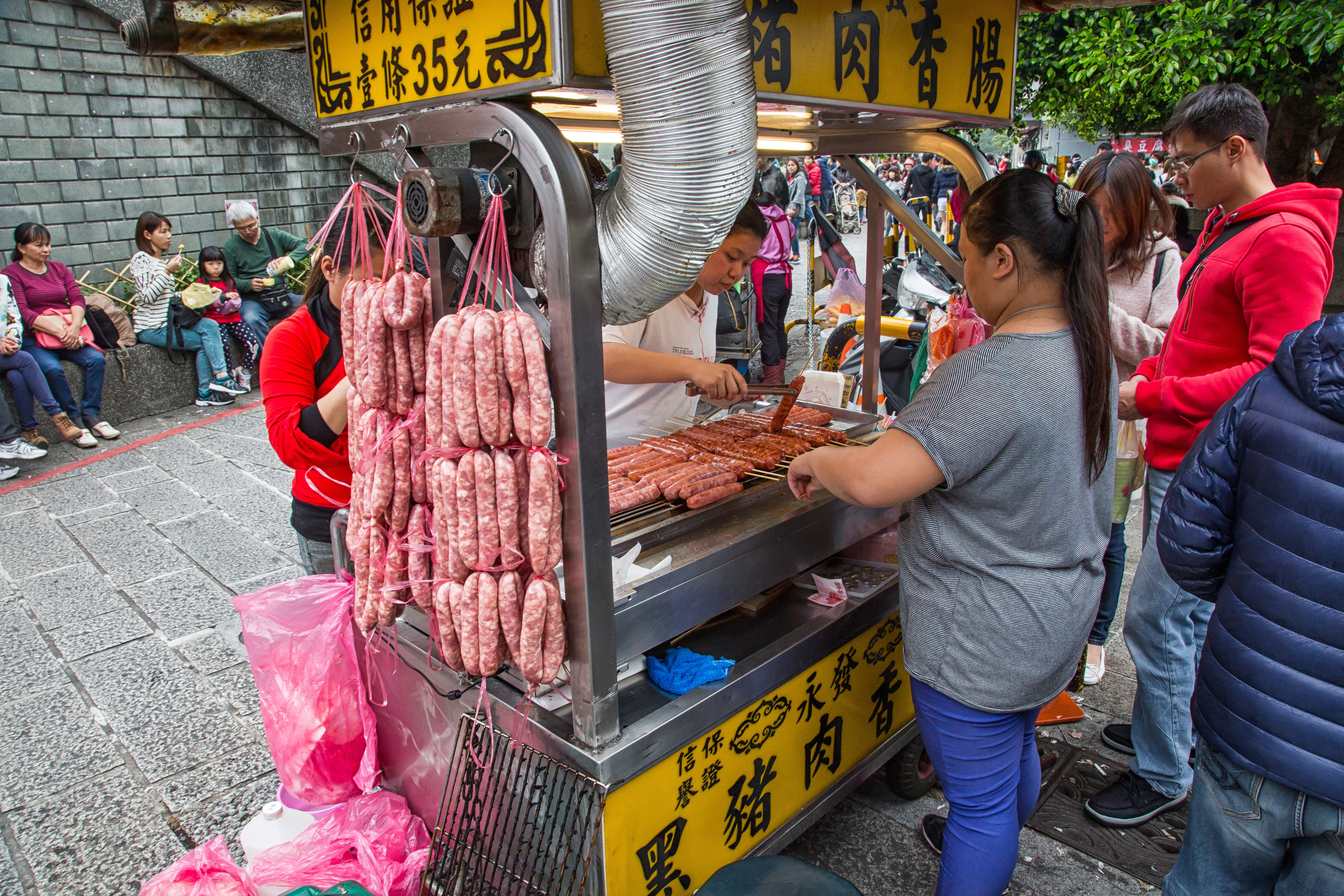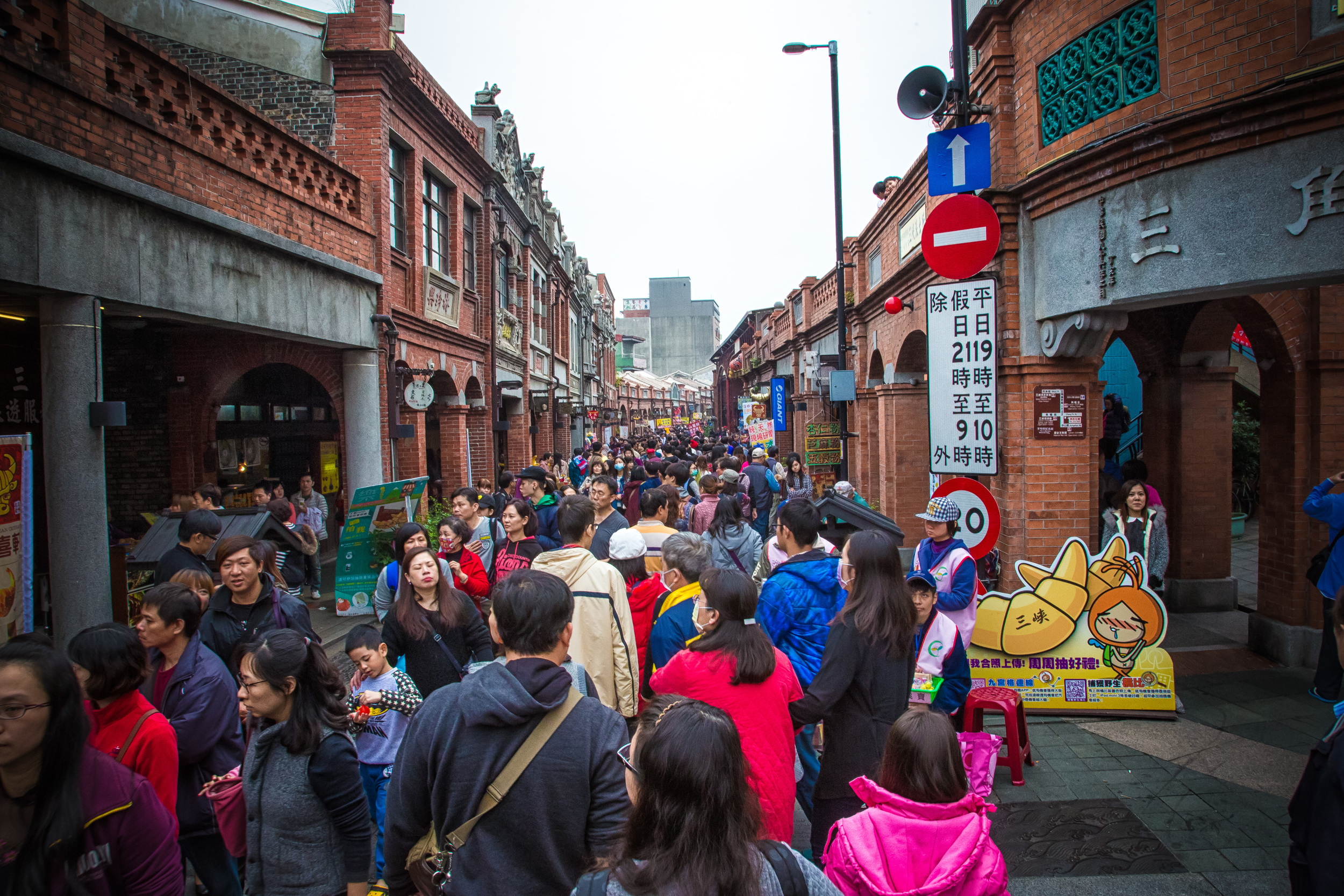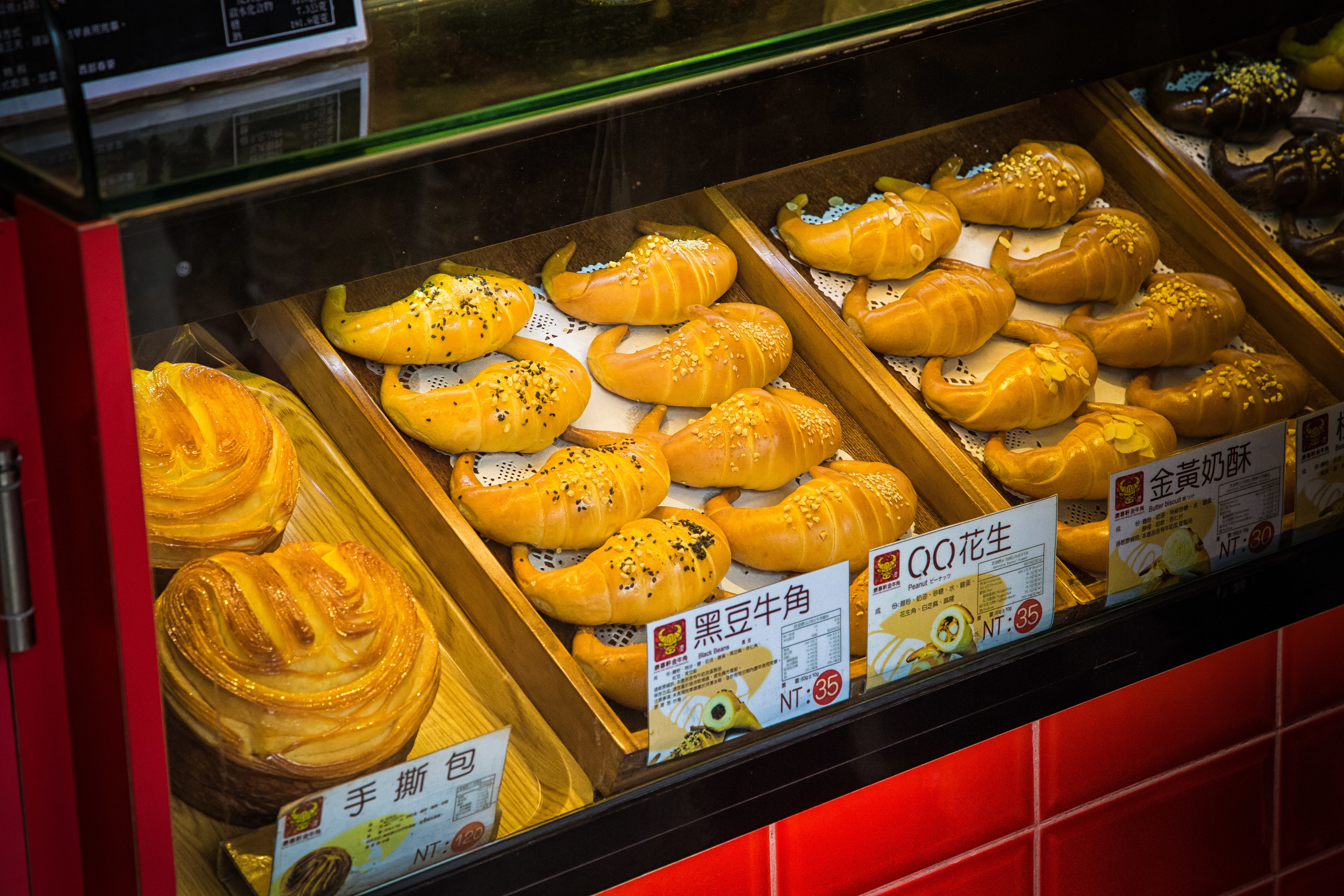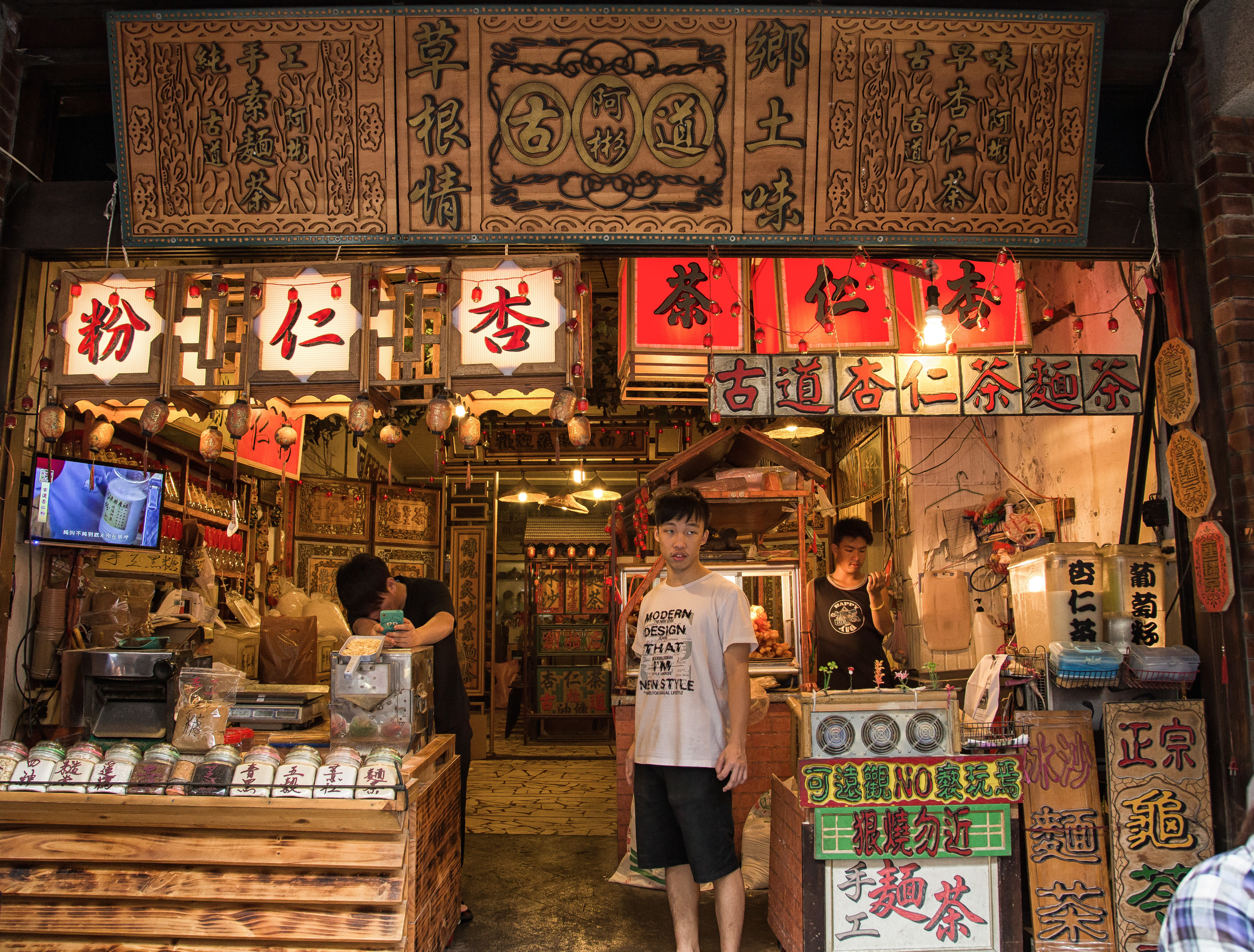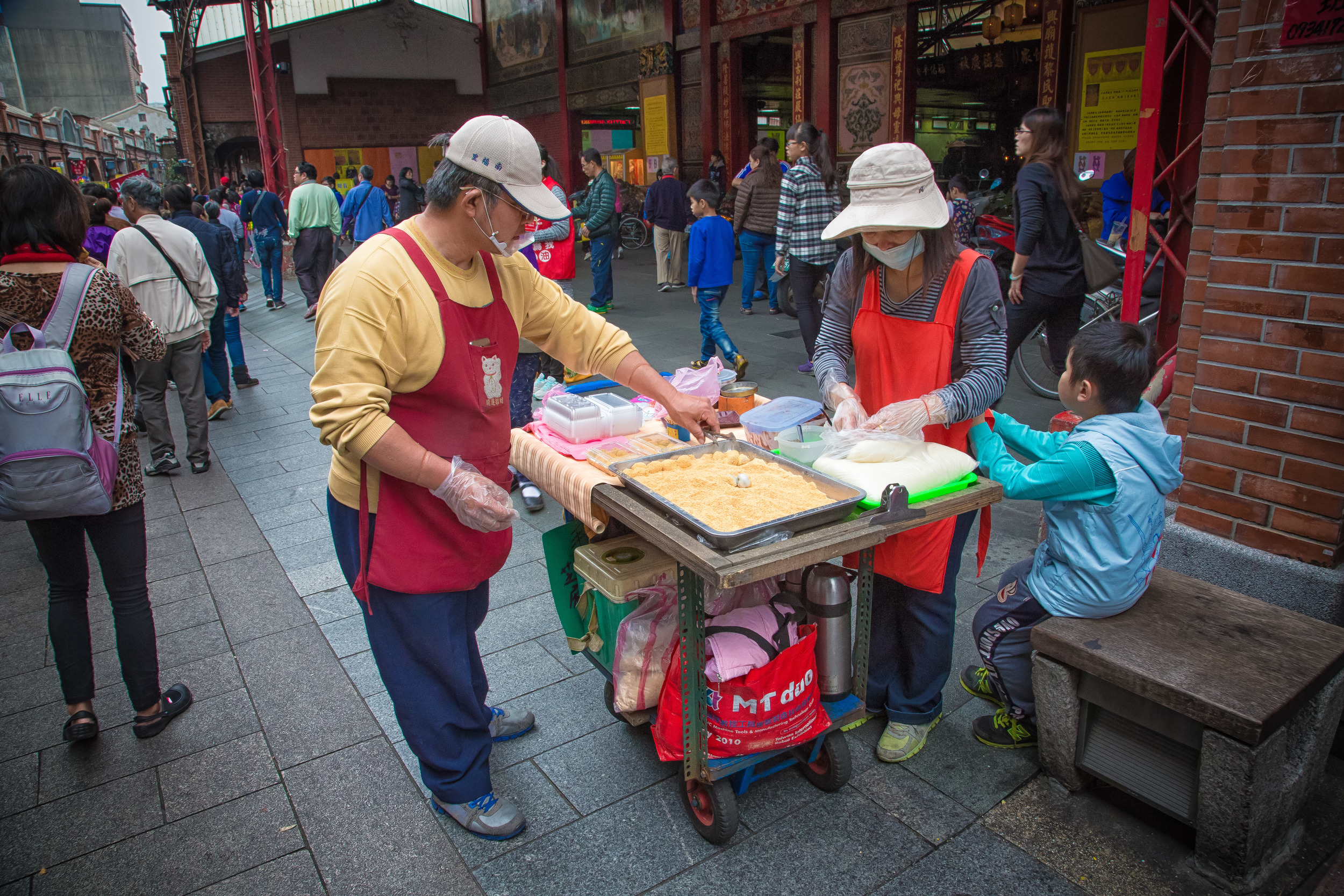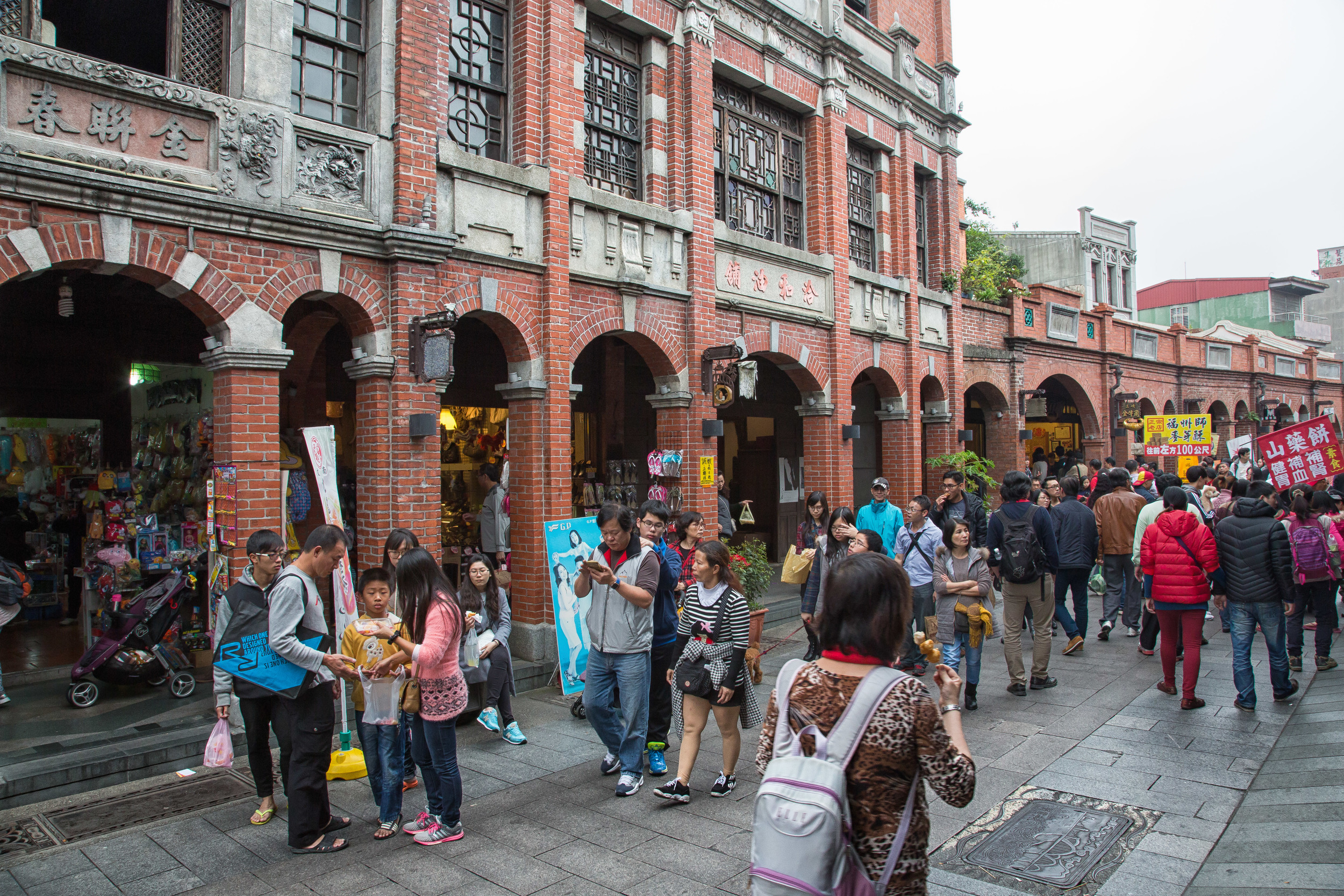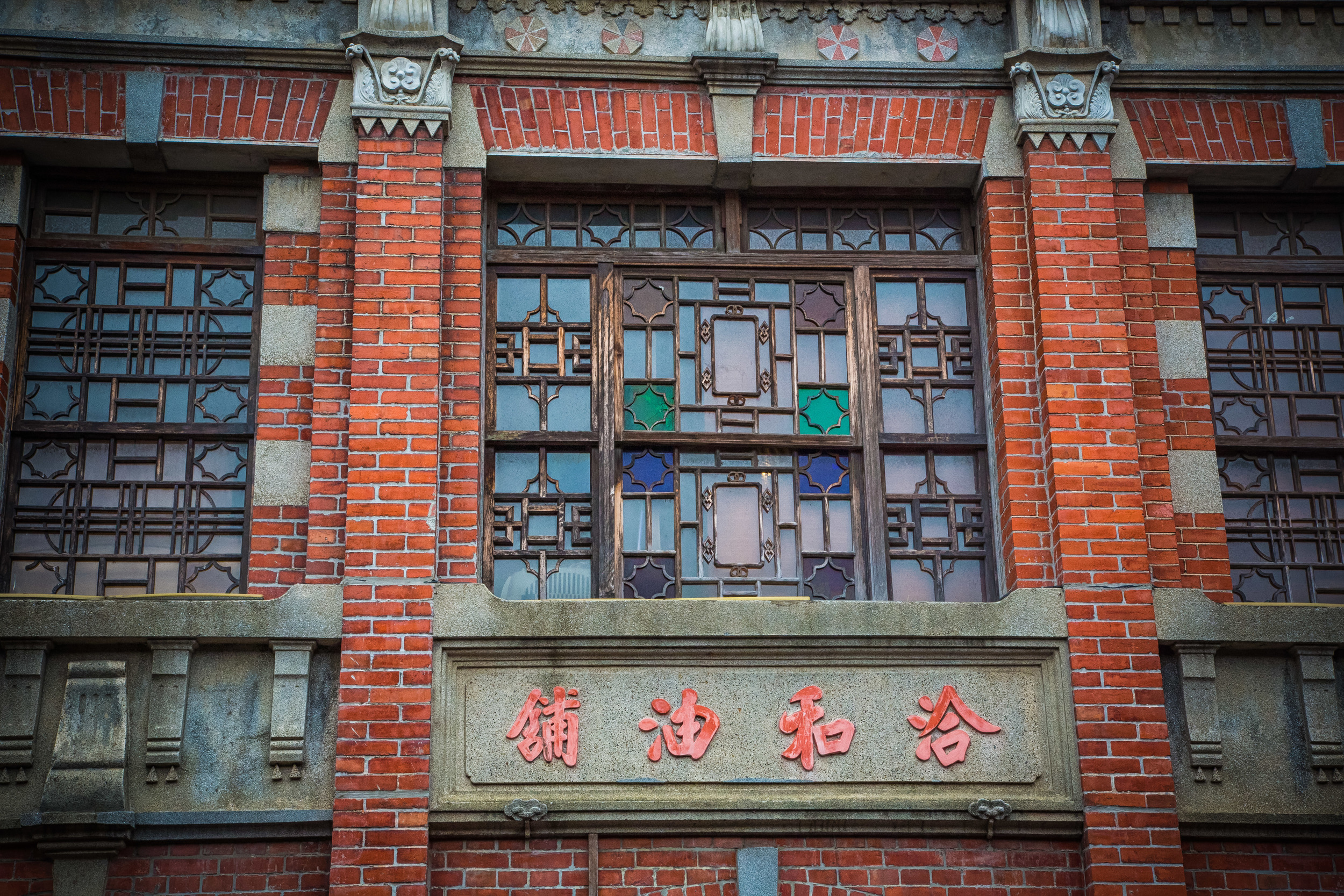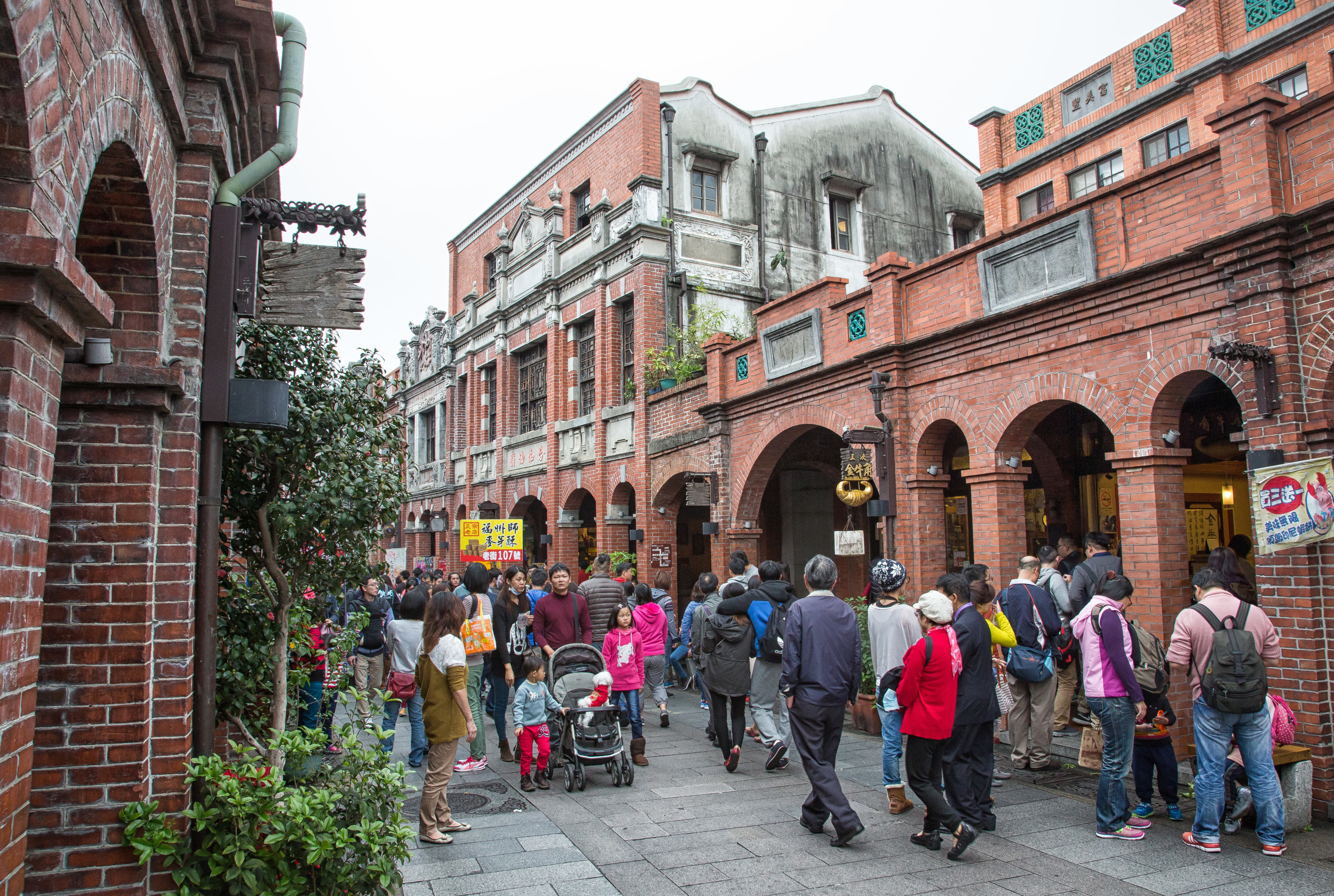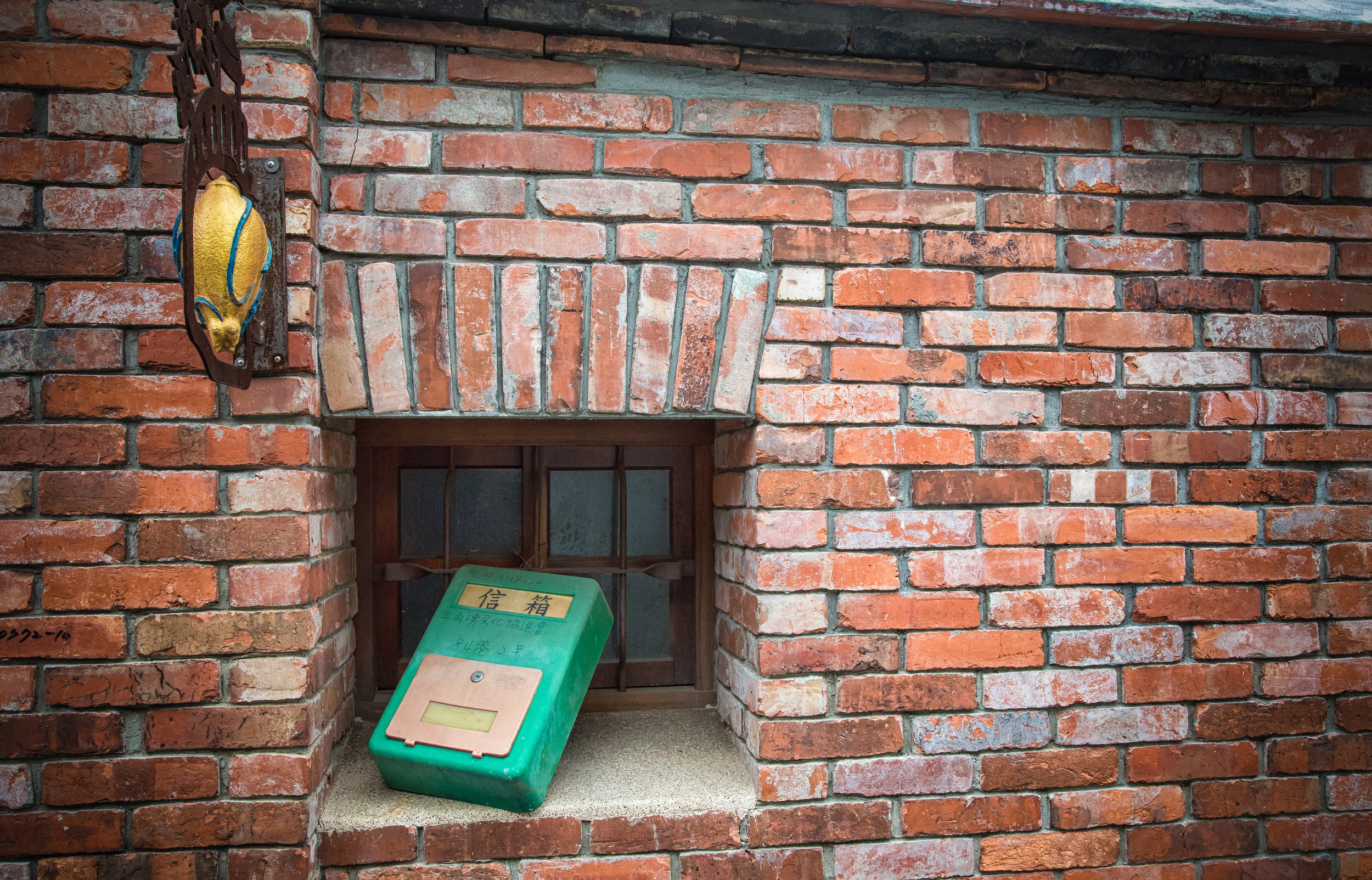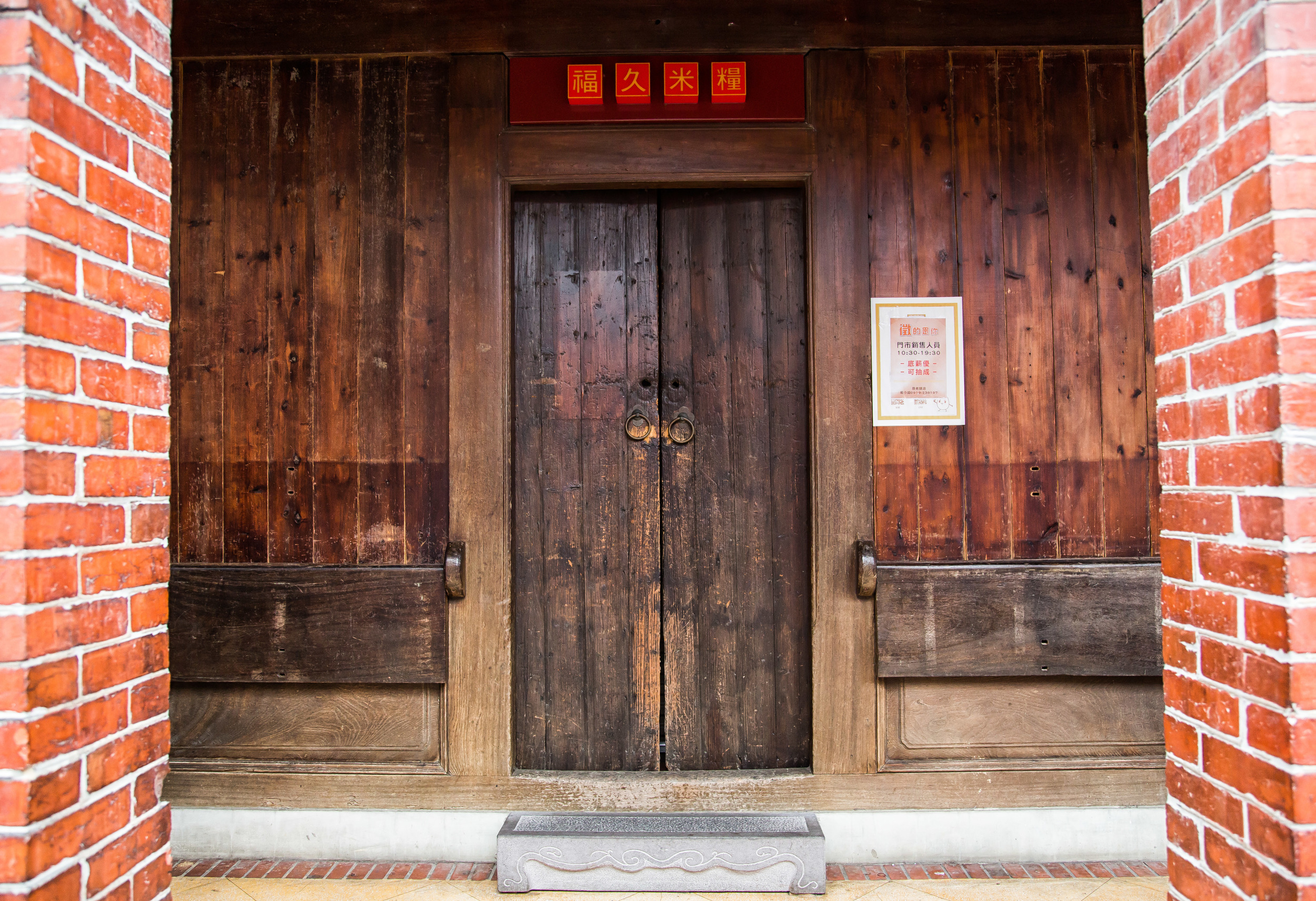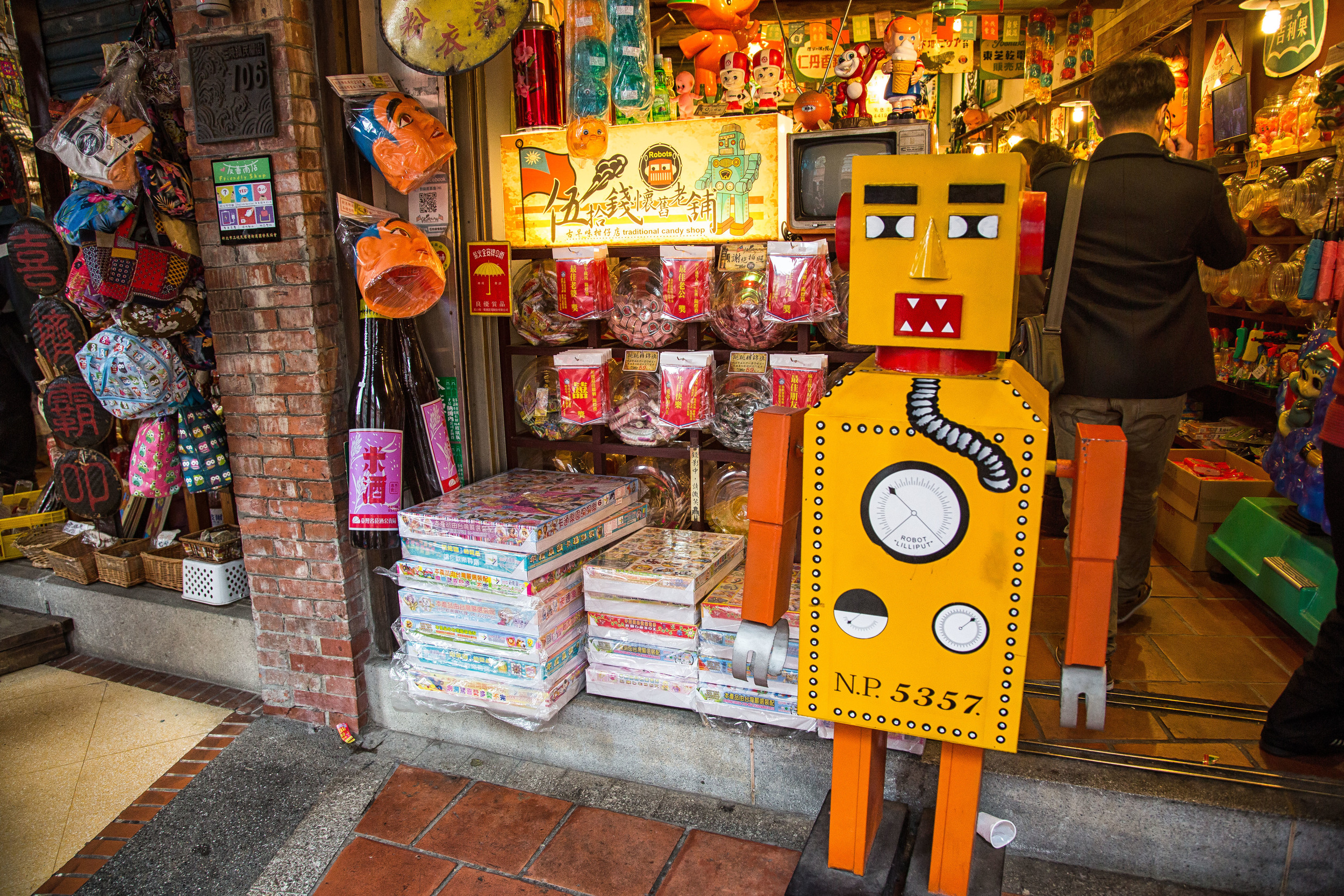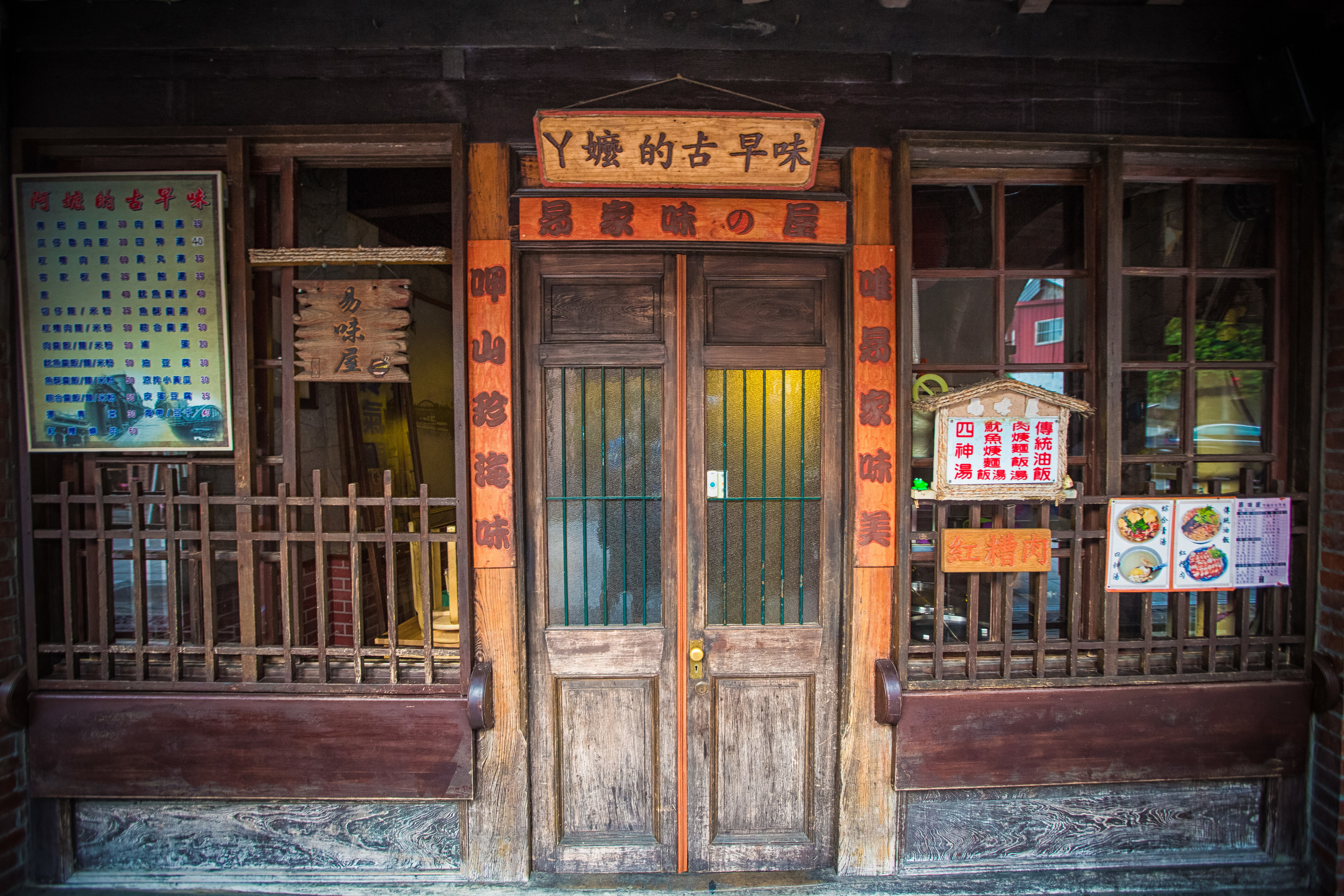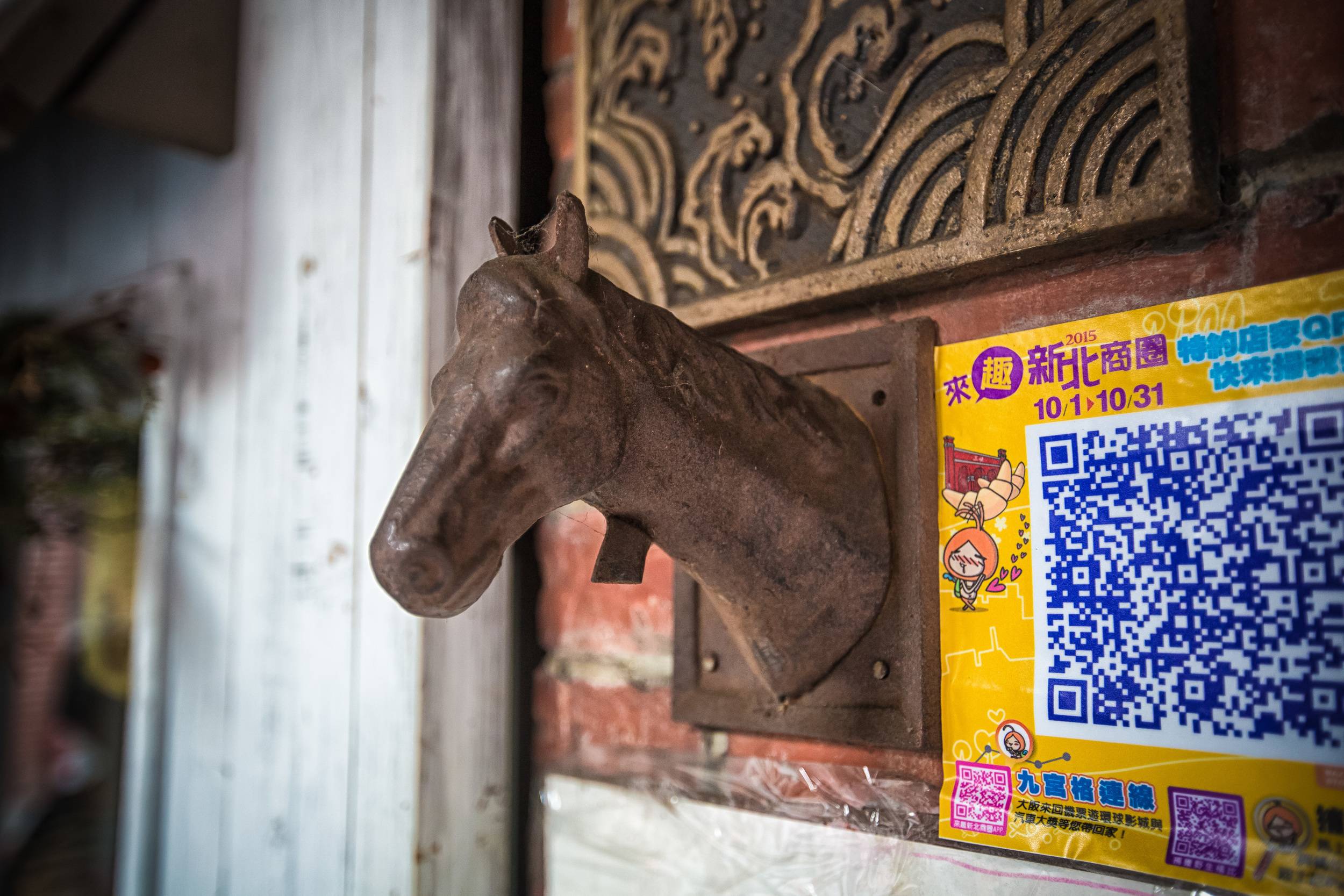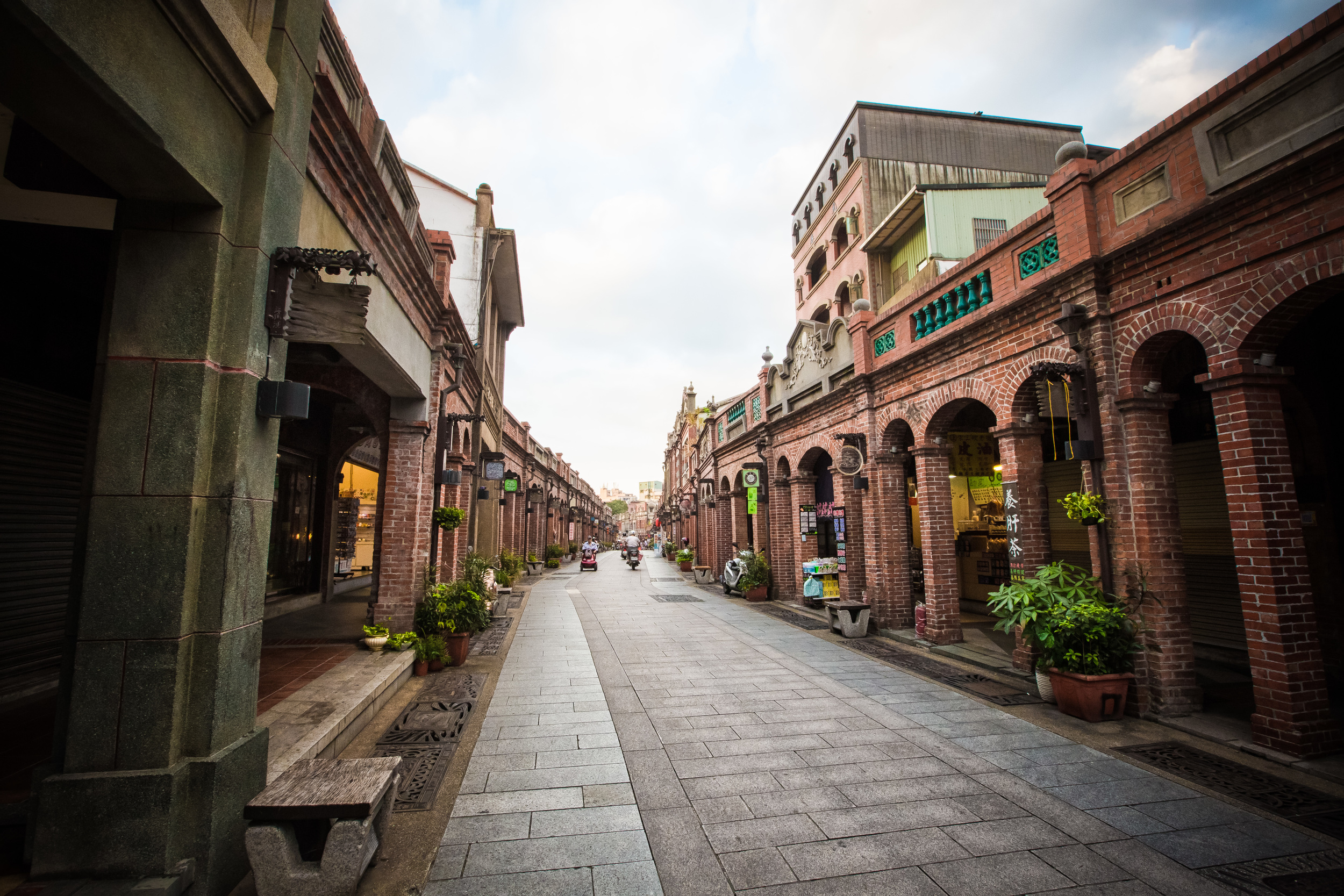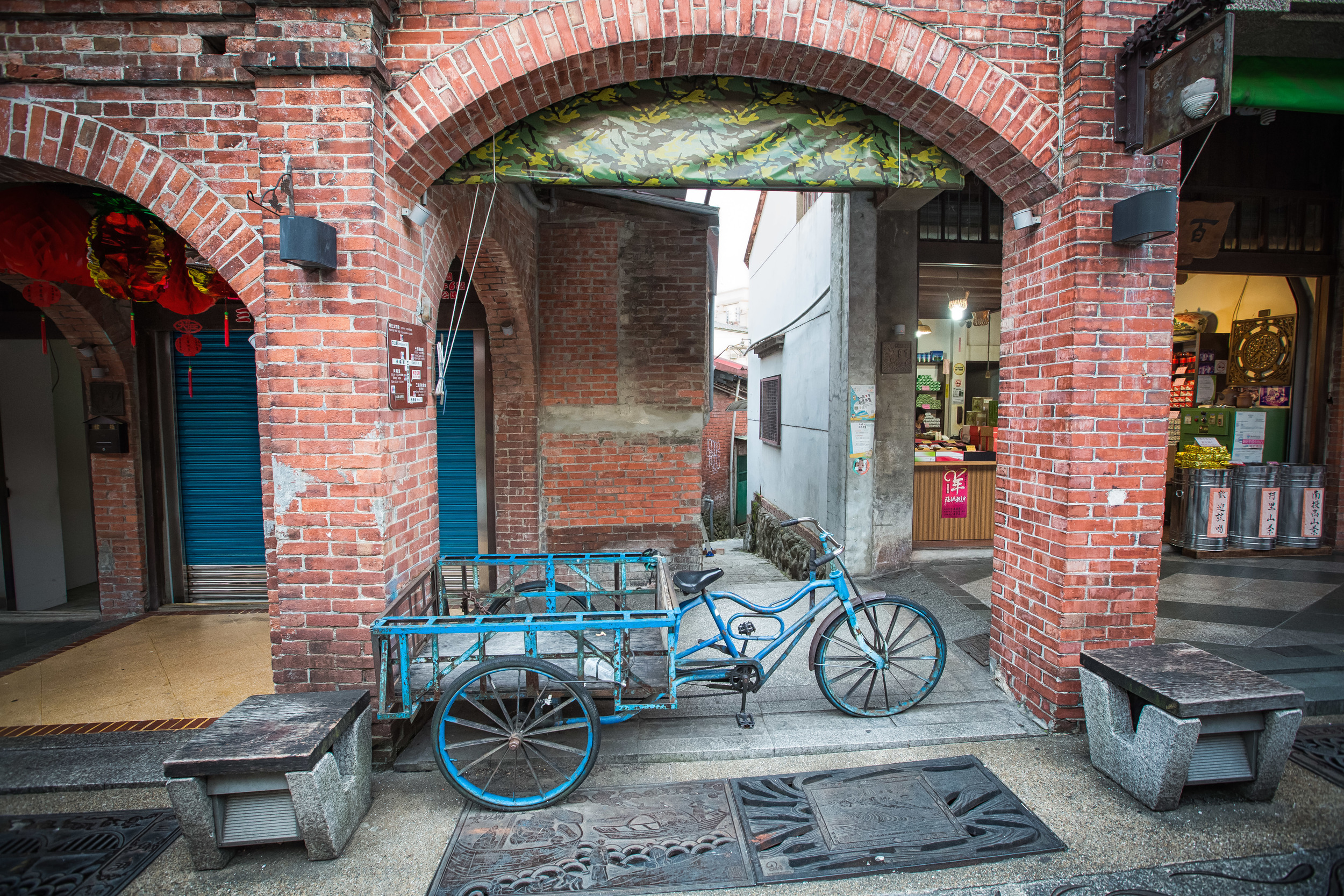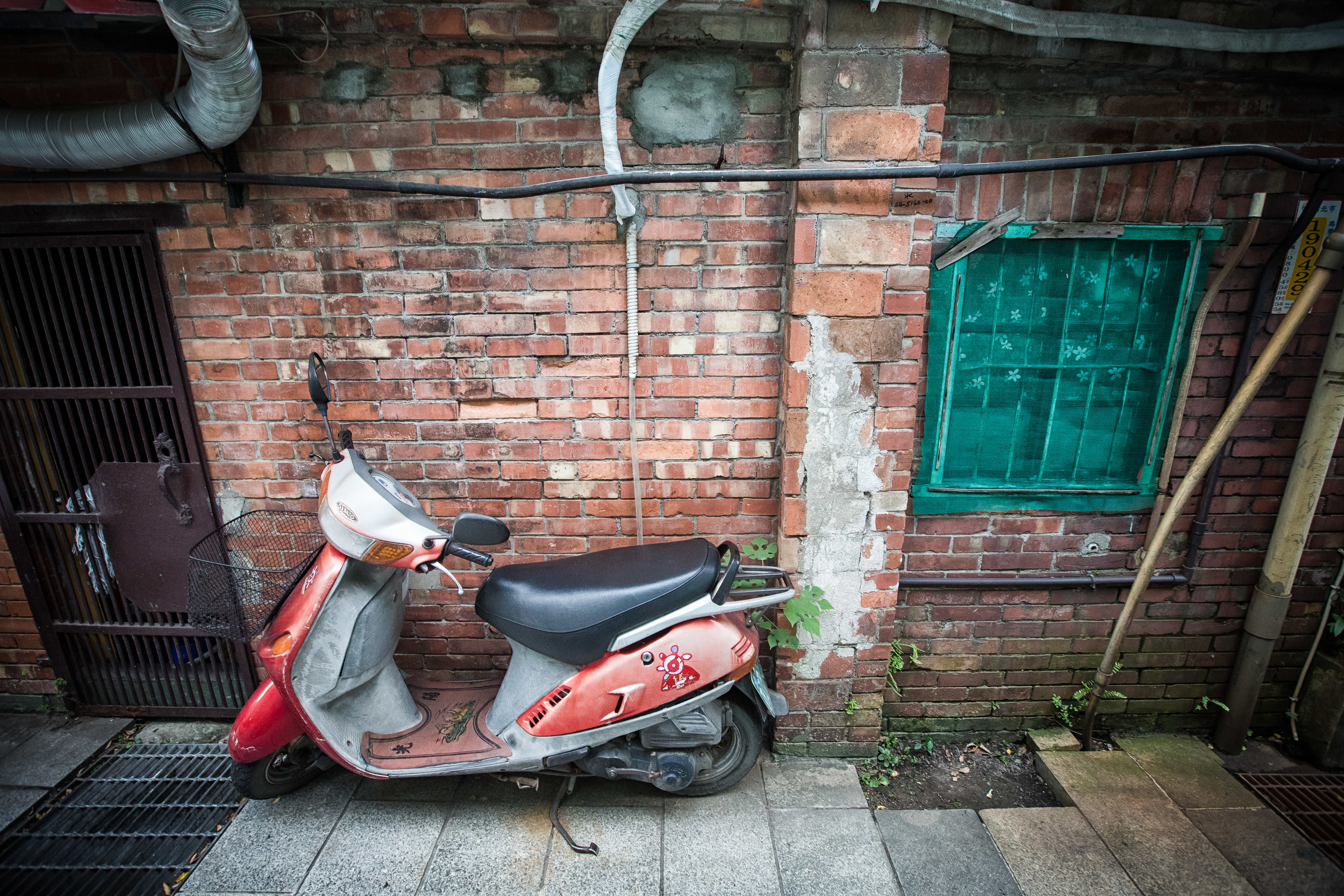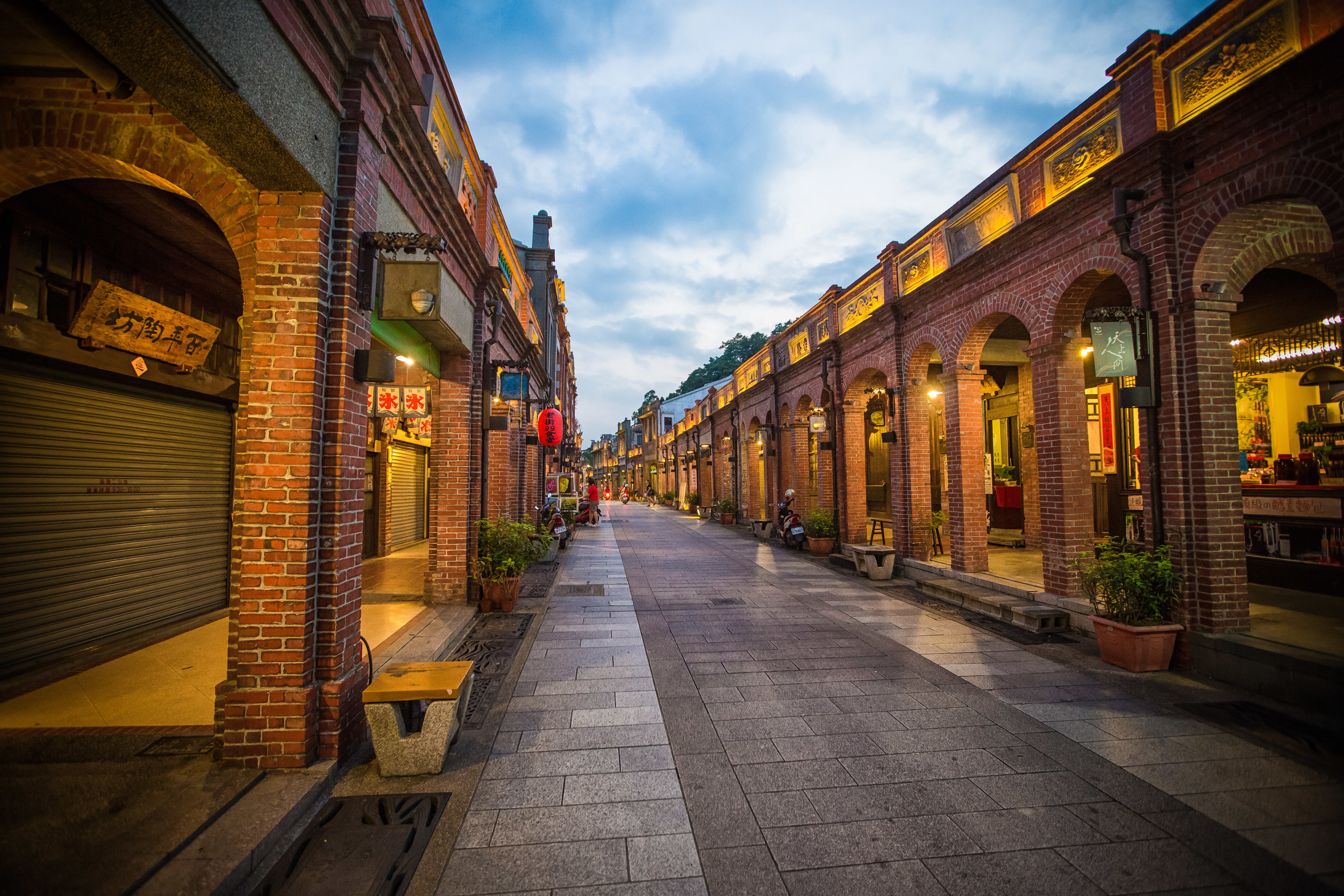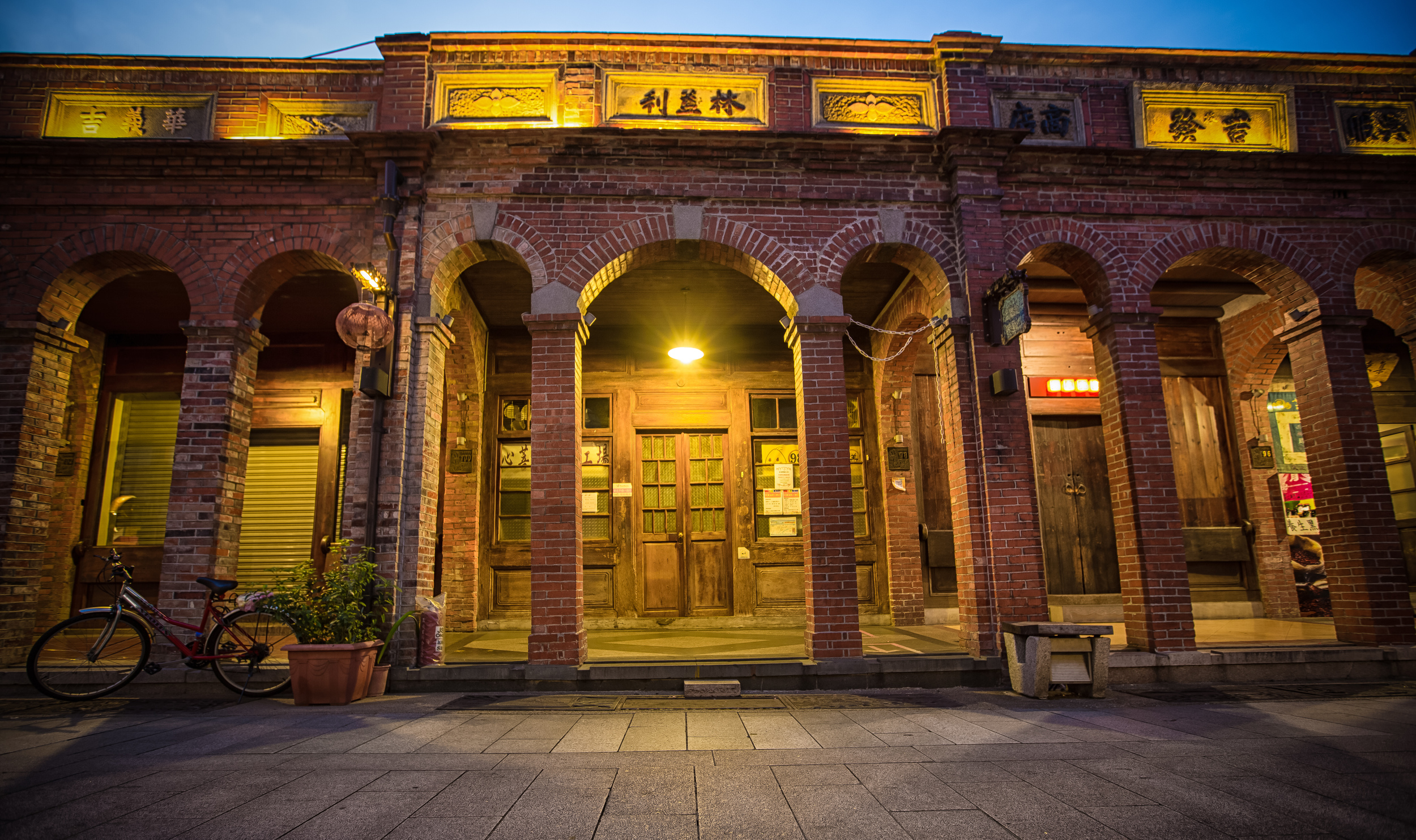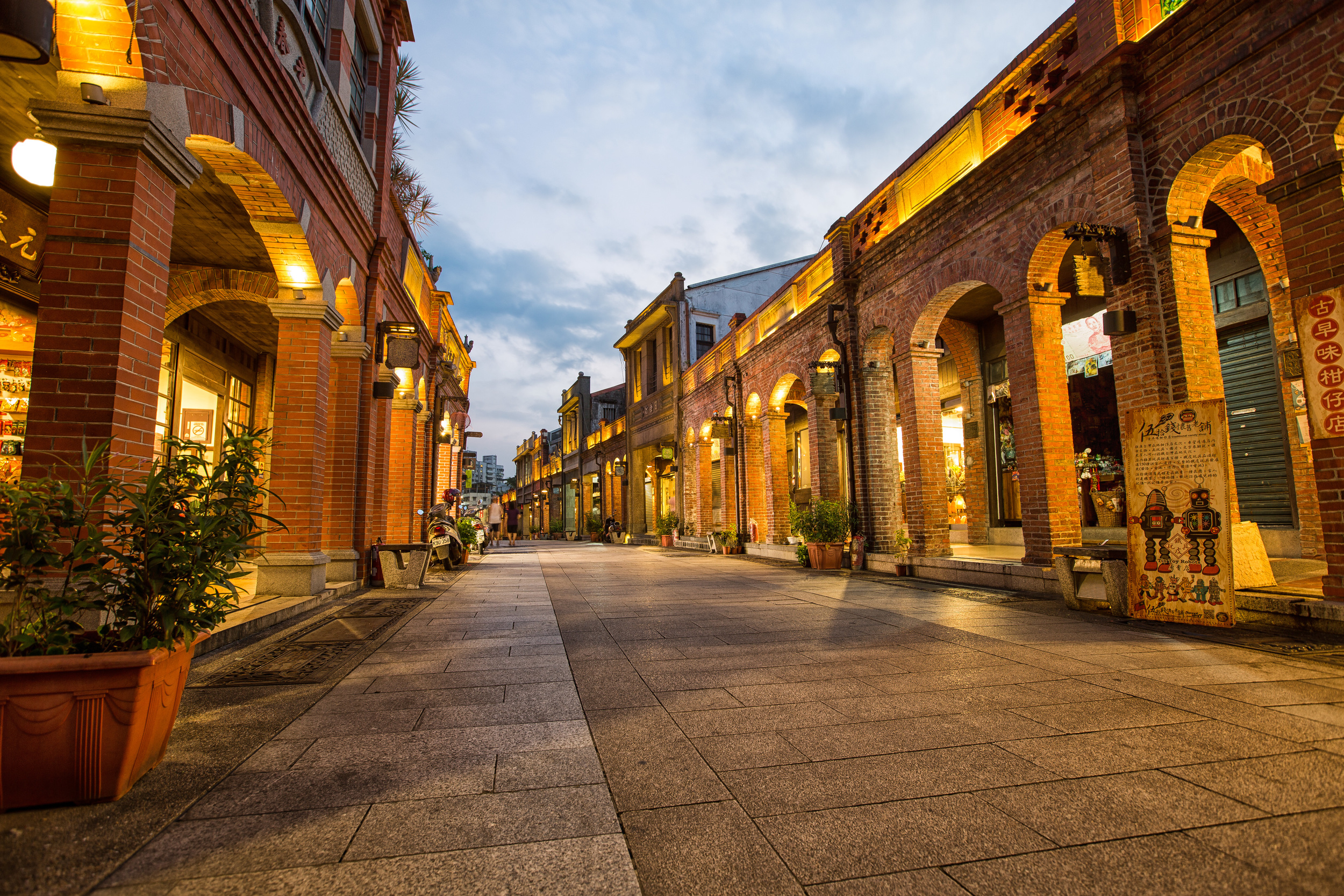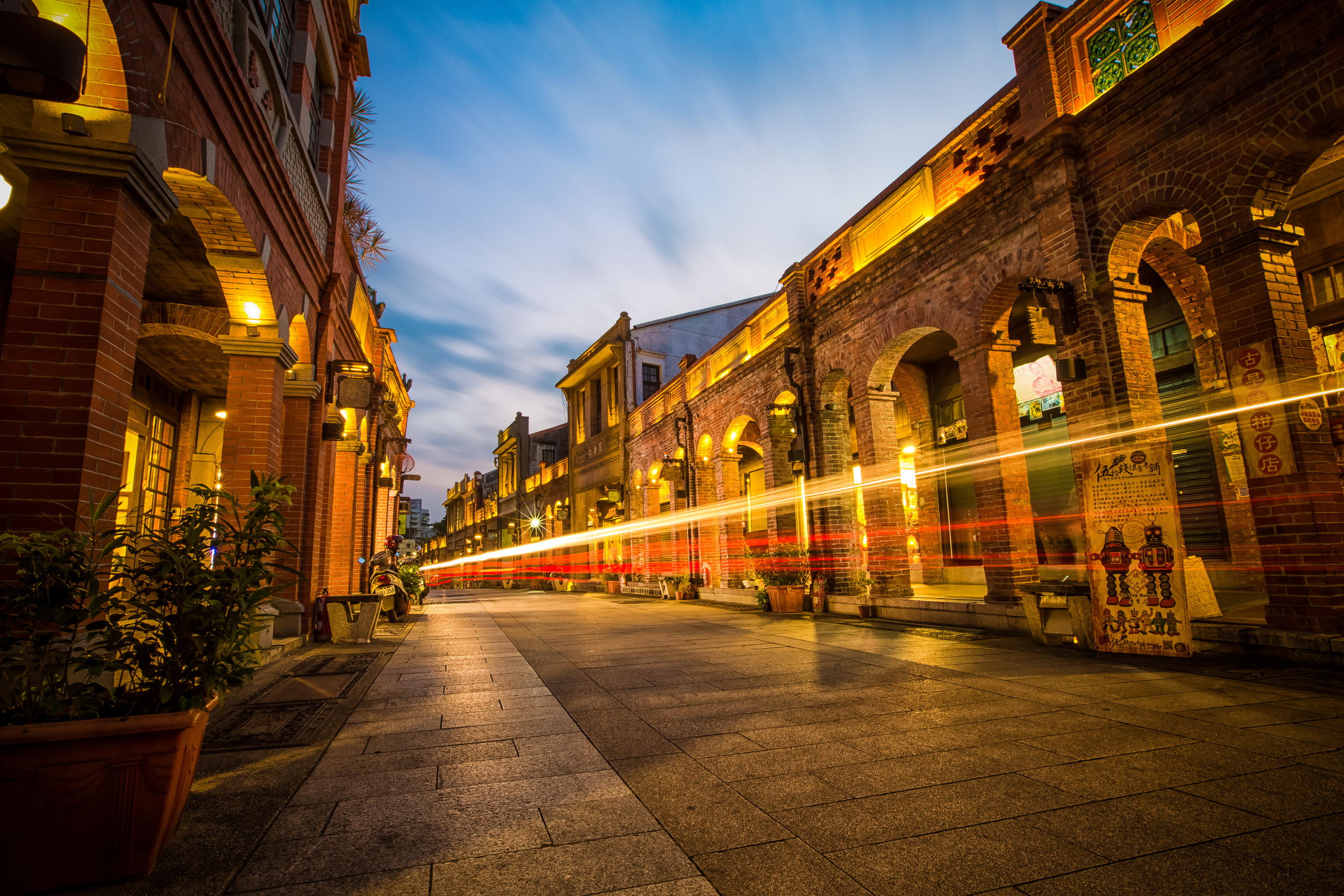The busiest of all the Lunar New Year Markets in Taiwan is Taipei’s Dihua Street (迪化街) in one of the oldest districts of the city. It is estimated that each year more than a million people visit the street in the two weeks leading up to the Lunar New Year festivities and that number is consistently rising with the market becoming larger each year.
Click here for the 2015 and 2016 Dihua Street Lunar New Year Photos.
This year the "street" has continued its outward expansion and is branching out to the neighbouring streets around it. It seems that with the rent being so extreme and more businesses wanting in on the action that the city has planned several streets to allow people to do their shopping and that in turn should allow for the easing of traffic on the street itself.
Dihua Street (迪化街) and the entire Dadaocheng area (大稻埕) has a history dating back to the 1850s where it was an important centre for commerce in Taipei - especially for Taiwanese tea, Chinese medicine, fabrics, etc. The street today still remains one of the most commercially active areas in Taipei and has been preserved to show its historical roots. Many of the buildings on the street were built in the baroque style which is quite common on many of Taiwan's old streets (Like Daxi Old Street)
Check out: Love, Daodaocheng - A site dedicated to the historic area of Taipei
The street is busiest during the preparations for Lunar New Year, but considering its history, it is an important tourist attraction for Taipei and you will also find the Xiahai City God Temple (霞海城隍廟) on the street as well which is one of Taipei's most important temples with Bao-An Temple (保安宮) and Confucius Temple (台北孔廟) also nearby. There is always something interesting going on in the area and it is a great place to visit to see "old Taipei" so if you can't make it during the Lunar New Year market, you can still go whenever you visit the city!
While visiting the street it is common to find vendors selling all sorts of peanuts, cashews and pistachios as well as different types of candy and traditional snacks. There are cured meats, freshly made Taiwanese-style and Hong Kong-style sausages as well as pork knuckle. If you are a fan of jerky you are in for a treat as you will find various styles of Taiwanese pork and beef jerky as well as different styles of dried fish and squid.
Vendors also sell all sorts of dried mushrooms, dried scallops, dried abalone and something called mullet row (烏魚子) or as the Japanese call it "karasumi" (カラスミ) which is an expensive salted and dried roe of the mullet fish. I'm not really a big fan, but it is popular in Taiwan and is a sign of wealth if you are able to serve it at your Lunar New Year feast.
You will also find an unhealthy variety of candy that can be in the form of dried fruit or the gummy variety. Lunar New Year is all about the family and children are an important part of the family. It is quite common to have a lot of candy available for the kids to eat while the parents are having fun and drinking Taiwanese Kaoliang (高粱酒) or Cognac and gambling.
One of the unfortunate aspects of the traditional market is that the sale of Shark Fin is still so prevalent - despite protests and a society that is changing its attitude toward the terrible and inhumane act of shark finning. There are various vendors throughout the market selling dried shark fins and while they continue to make profit off of such a bloody and wasteful trade - they are also quite aware that societies perception is changing and that the foreign community are very vocal about it which means these shop owners are not very keen on being photographed.
The Lunar New Year Market on Dihua Street is progressively getting bigger each year and the amount of people that show up in the time leading up to the important holiday has also increased exponentially. It is a great time of the year to be a photographer in Taipei and getting to the street is one of the things that photographers around here enjoy doing. Getting good shots however can be difficult due to the amount of people and the constant state of motion. You have a split second to get a photo before the people behind you are pushing and that is part of the reason why it is so exciting.
Lunar New Year is a busy time in Taiwan and I'll be quite busy as usual. The entire country has a week off from work and I'll be taking part in the festivities with friends. The weather is looking good for the first few days so I'll be busy with my camera!
Happy Lunar New Year! 大家,新年快樂~ 雞年大吉!恭喜發財
Gallery / Flickr (High Res Photos)
